Frequent persons on Peru's street signs
countries
211 names / 1104 streets
José de San Martín
 44
José Francisco de San Martín y Matorras, nicknamed "the Liberator of Argentina, Chile and Peru", was an Argentine general and the primary leader of the southern and central parts of South America's...
44
José Francisco de San Martín y Matorras, nicknamed "the Liberator of Argentina, Chile and Peru", was an Argentine general and the primary leader of the southern and central parts of South America's...
Ramón Castilla
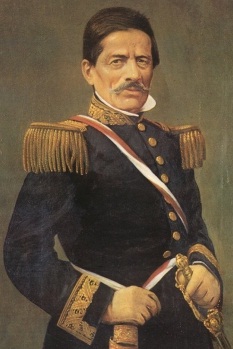 37
Ramón Castilla y Marquesado was a Peruvian caudillo who served as President of Peru three times as well as the Interim President of Peru in 1863. His earliest prominent appearance in Peruvian history...
37
Ramón Castilla y Marquesado was a Peruvian caudillo who served as President of Peru three times as well as the Interim President of Peru in 1863. His earliest prominent appearance in Peruvian history...
Miguel Grau Seminario
 33
Miguel María Grau Seminario was the most renowned Peruvian naval officer and hero of the naval battle of Angamos during the War of the Pacific (1879–1884). He was known as el Caballero de los Mares...
33
Miguel María Grau Seminario was the most renowned Peruvian naval officer and hero of the naval battle of Angamos during the War of the Pacific (1879–1884). He was known as el Caballero de los Mares...
Alfonso Ugarte
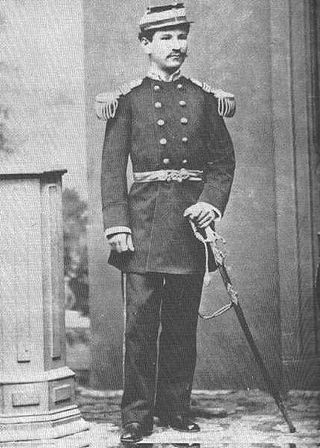 26
Alfonso Ugarte was a Peruvian civilian turned military commander during the War of the Pacific, between Peru and Bolivia against Chile. He held the rank of colonel.
26
Alfonso Ugarte was a Peruvian civilian turned military commander during the War of the Pacific, between Peru and Bolivia against Chile. He held the rank of colonel.
Simón Bolívar
 25
Simón José Antonio de la Santísima Trinidad Bolívar Palacios Ponte y Blanco was a Venezuelan military and political leader who led what are currently the countries of Colombia, Venezuela, Ecuador,...
25
Simón José Antonio de la Santísima Trinidad Bolívar Palacios Ponte y Blanco was a Venezuelan military and political leader who led what are currently the countries of Colombia, Venezuela, Ecuador,...
Francisco Bolognesi
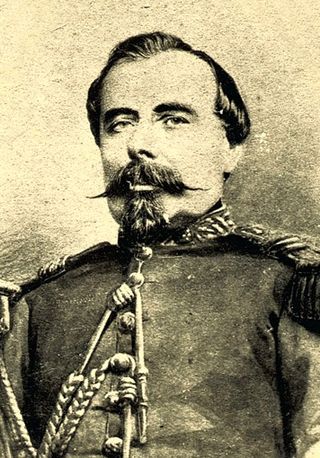 24
Francisco Bolognesi Cervantes was a Peruvian military colonel. He is considered a national hero in Peru and was declared patron of the Army of Peru by the government of Peru on January 2 of 1951.
24
Francisco Bolognesi Cervantes was a Peruvian military colonel. He is considered a national hero in Peru and was declared patron of the Army of Peru by the government of Peru on January 2 of 1951.
Túpac Amaru
 24
Túpac Amaru was the last Sapa Inca of the Neo-Inca State, the final remaining independent part of the Inca Empire. He was executed by the Spanish following a months-long pursuit after the fall of the...
24
Túpac Amaru was the last Sapa Inca of the Neo-Inca State, the final remaining independent part of the Inca Empire. He was executed by the Spanish following a months-long pursuit after the fall of the...
Rose of Lima
 23
Rose of Lima, TOSD was a member of the Third Order of Saint Dominic in Lima, Peru, who became known for both her life of severe penance and her care of the poverty stricken of the city through her...
23
Rose of Lima, TOSD was a member of the Third Order of Saint Dominic in Lima, Peru, who became known for both her life of severe penance and her care of the poverty stricken of the city through her...
José Olaya
 20
José Silverio Olaya Balandra was a Peruvian hero in the Peruvian War of Independence.
20
José Silverio Olaya Balandra was a Peruvian hero in the Peruvian War of Independence.
Jorge Chávez
 19
Jorge Antonio Chávez Dartnell, also known as Géo Chávez, was a Peruvian aviator. At a young age, he achieved fame for his aeronautical feats. He died in 1910 after a heavy wind broke the wings of his...
19
Jorge Antonio Chávez Dartnell, also known as Géo Chávez, was a Peruvian aviator. At a young age, he achieved fame for his aeronautical feats. He died in 1910 after a heavy wind broke the wings of his...
Antonio José de Sucre
 17
Antonio José de Sucre y Alcalá, known as the "Gran Mariscal de Ayacucho", was a Venezuelan general and politician who served as the president of Bolivia from 1825 to 1828. A close friend and...
17
Antonio José de Sucre y Alcalá, known as the "Gran Mariscal de Ayacucho", was a Venezuelan general and politician who served as the president of Bolivia from 1825 to 1828. A close friend and...
José Carlos Mariátegui
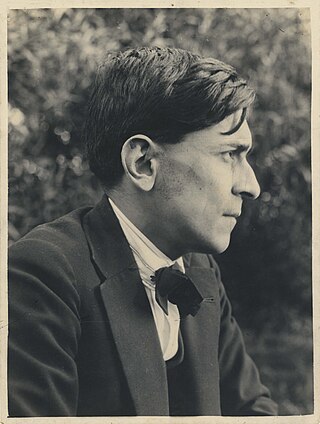 16
José Carlos Mariátegui La Chira was a Peruvian writer, journalist, politician and Marxist philosopher.
16
José Carlos Mariátegui La Chira was a Peruvian writer, journalist, politician and Marxist philosopher.
Felipe Santiago Salaverry
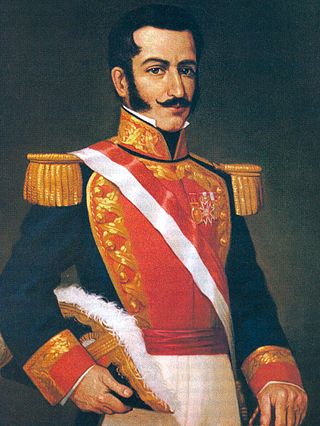 15
Felipe Santiago Salaverry del Solar was a Peruvian soldier and politician who served as the Supreme Chief of Peru.
15
Felipe Santiago Salaverry del Solar was a Peruvian soldier and politician who served as the Supreme Chief of Peru.
César Vallejo
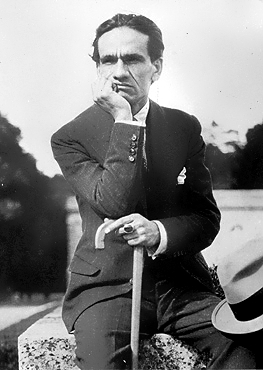 14
César Abraham Vallejo Mendoza was a Peruvian poet, writer, playwright, and journalist. Although he published only two books of poetry during his lifetime, he is considered one of the great poetic...
14
César Abraham Vallejo Mendoza was a Peruvian poet, writer, playwright, and journalist. Although he published only two books of poetry during his lifetime, he is considered one of the great poetic...
Leoncio Prado Gutiérrez
 14
Leoncio Prado Gutiérrez, was a Peruvian soldier and adventurer who participated in various military actions against Spain; in Cuba and the Philippines in the 1870s. He also participated in other wars...
14
Leoncio Prado Gutiérrez, was a Peruvian soldier and adventurer who participated in various military actions against Spain; in Cuba and the Philippines in the 1870s. He also participated in other wars...
Andrés Avelino Cáceres
 14
Andrés Avelino Cáceres Dorregaray served as the President of Peru two times during the 19th century, from 1886 to 1890 as the 27th President of Peru, and again from 1894 to 1895 as the 30th President...
14
Andrés Avelino Cáceres Dorregaray served as the President of Peru two times during the 19th century, from 1886 to 1890 as the 27th President of Peru, and again from 1894 to 1895 as the 30th President...
Micaela Bastidas
 14
Micaela Bastidas Puyucahua was a pioneering indigenous leader against Spanish rule in South America, and a martyr for Peruvian independence. With her husband Túpac Amaru II, she led a rebellion...
14
Micaela Bastidas Puyucahua was a pioneering indigenous leader against Spanish rule in South America, and a martyr for Peruvian independence. With her husband Túpac Amaru II, she led a rebellion...
Daniel Alcides Carrión
 13
Daniel Alcides Carrión García was a Peruvian medical student after whom Carrion's disease is named.
13
Daniel Alcides Carrión García was a Peruvian medical student after whom Carrion's disease is named.
Manco Cápac
 12
Manco Cápac, also known as Manco Inca and Ayar Manco, was, according to some historians, the first governor and founder of the Inca civilization in Cusco, possibly in the early 13th century. He is...
12
Manco Cápac, also known as Manco Inca and Ayar Manco, was, according to some historians, the first governor and founder of the Inca civilization in Cusco, possibly in the early 13th century. He is...
Huáscar
 12
Huáscar Inca also Guazcar was Sapa Inca of the Inca Empire from 1527 to 1532. He succeeded his father, Huayna Capac and his brother Ninan Cuyochi, both of whom died of smallpox while campaigning near...
12
Huáscar Inca also Guazcar was Sapa Inca of the Inca Empire from 1527 to 1532. He succeeded his father, Huayna Capac and his brother Ninan Cuyochi, both of whom died of smallpox while campaigning near...
Ricardo Palma
 11
Manuel Ricardo Palma Soriano was a Peruvian author, scholar, librarian and politician. His magnum opus is the Tradiciones peruanas.
11
Manuel Ricardo Palma Soriano was a Peruvian author, scholar, librarian and politician. His magnum opus is the Tradiciones peruanas.
Antonio Raimondi
 11
Antonio Raimondi was an Italian-born Peruvian geographer and scientist. Born in Milan, Raimondi emigrated to Peru, arriving on July 28, 1850, at the port of Callao. In 1851 he became a professor of...
11
Antonio Raimondi was an Italian-born Peruvian geographer and scientist. Born in Milan, Raimondi emigrated to Peru, arriving on July 28, 1850, at the port of Callao. In 1851 he became a professor of...
Mateo Pumacahua
 11
Mateo García Pumacahua simply known as Pumacahua, modern spelling variants Pumakawa or Pumaqawa was a Royalist commander later turned into a Peruvian revolutionary who led the Cuzco Rebellion of 1814...
11
Mateo García Pumacahua simply known as Pumacahua, modern spelling variants Pumakawa or Pumaqawa was a Royalist commander later turned into a Peruvian revolutionary who led the Cuzco Rebellion of 1814...
Rafael Trujillo
 11
Rafael Leónidas Trujillo Molina, nicknamed El Jefe ), was a Dominican military commander and dictator who ruled the Dominican Republic from August 1930 until his assassination in May 1961. He served...
11
Rafael Leónidas Trujillo Molina, nicknamed El Jefe ), was a Dominican military commander and dictator who ruled the Dominican Republic from August 1930 until his assassination in May 1961. He served...
Nicolás de Piérola
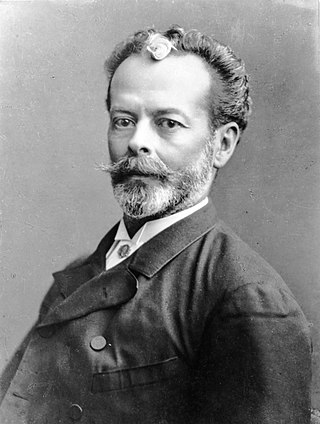 10
José Nicolás Baltasar Fernández de Piérola y Villena was a Peruvian politician and Minister of Finance who served as the 23rd and 31st President of the Republic of Peru, from 1879 to 1881 and 1895 to...
10
José Nicolás Baltasar Fernández de Piérola y Villena was a Peruvian politician and Minister of Finance who served as the 23rd and 31st President of the Republic of Peru, from 1879 to 1881 and 1895 to...
Roque Sáenz Peña
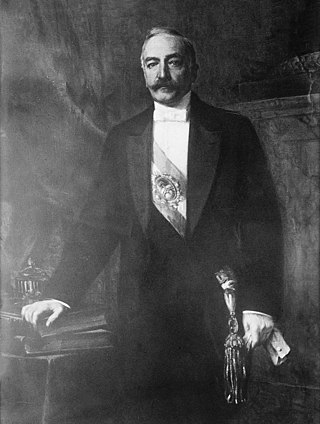 10
Roque José Antonio del Sagrado Corazón de Jesús Sáenz Peña Lahitte was an Argentine politician and lawyer who served as President of Argentina from 12 October 1910 to his death in office on 9 August...
10
Roque José Antonio del Sagrado Corazón de Jesús Sáenz Peña Lahitte was an Argentine politician and lawyer who served as President of Argentina from 12 October 1910 to his death in office on 9 August...
Saint Peter
 10
Saint Peter, also known as Peter the Apostle, Simon Peter, Simeon, Simon, or Cephas, was one of the Twelve Apostles of Jesus Christ and one of the first leaders of the early Christian Church. He...
10
Saint Peter, also known as Peter the Apostle, Simon Peter, Simeon, Simon, or Cephas, was one of the Twelve Apostles of Jesus Christ and one of the first leaders of the early Christian Church. He...
Atahualpa
 10
Atahualpa, also Atawallpa (Quechua), Atabalica, Atahuallpa, Atabalipa, was the last effective Inca emperor before his capture and execution during the Spanish conquest.
10
Atahualpa, also Atawallpa (Quechua), Atabalica, Atahuallpa, Atabalipa, was the last effective Inca emperor before his capture and execution during the Spanish conquest.
Mariano Melgar
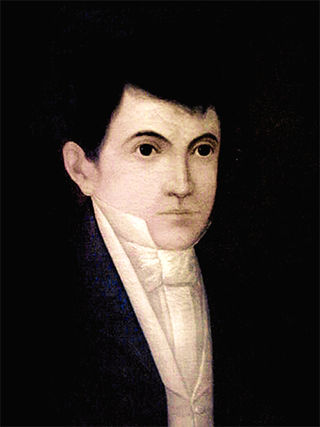 9
Mariano Lorenzo Melgar Valdivieso was a Peruvian revolutionary, poet, artist, translator and patriot soldier during the Peruvian War of Independence from Spain. As a poet, Melgar became one of the...
9
Mariano Lorenzo Melgar Valdivieso was a Peruvian revolutionary, poet, artist, translator and patriot soldier during the Peruvian War of Independence from Spain. As a poet, Melgar became one of the...
Pachacuti
 9
Pachacuti Inca Yupanqui, also called Pachacútec, was the ninth Sapa Inca of the Kingdom of Cusco which he transformed into the Inca Empire. Most archaeologists now believe that the famous Inca site...
9
Pachacuti Inca Yupanqui, also called Pachacútec, was the ninth Sapa Inca of the Kingdom of Cusco which he transformed into the Inca Empire. Most archaeologists now believe that the famous Inca site...
José Gálvez Moreno
 9
José Miguel Gálvez Moreno, was a Peruvian sailor and politician considered a war hero in Peru for his actions during the War of the Pacific. He was a son of José Gálvez Egúsquiza, who died in the...
9
José Miguel Gálvez Moreno, was a Peruvian sailor and politician considered a war hero in Peru for his actions during the War of the Pacific. He was a son of José Gálvez Egúsquiza, who died in the...
Julio C. Tello
 9
Julio César Tello Rojas was a Peruvian archaeologist. Tello is considered the "father of Peruvian archeology" and was the first indigenous archaeologist in South America.
9
Julio César Tello Rojas was a Peruvian archaeologist. Tello is considered the "father of Peruvian archeology" and was the first indigenous archaeologist in South America.
Francisco Pizarro
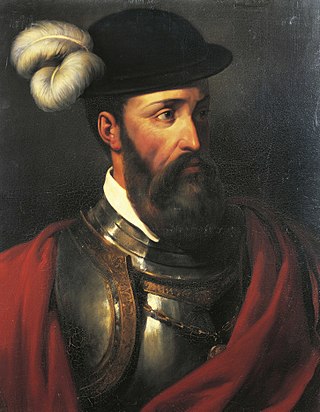 8
Francisco Pizarro, Marquess of the Atabillos was a Spanish conquistador, best known for his expeditions that led to the Spanish conquest of the Inca Empire.
8
Francisco Pizarro, Marquess of the Atabillos was a Spanish conquistador, best known for his expeditions that led to the Spanish conquest of the Inca Empire.
John the Baptist
 8
John the Baptist was a Jewish preacher active in the area of the Jordan River in the early 1st century AD. He is also known as Saint John the Forerunner in Eastern Orthodoxy, John the Immerser in...
8
John the Baptist was a Jewish preacher active in the area of the Jordan River in the early 1st century AD. He is also known as Saint John the Forerunner in Eastern Orthodoxy, John the Immerser in...
Nicolás Ayllón
 8
Nicolás Ayllón fue un laico peruano, hijo de uno de los caciques de Chiclayo.
8
Nicolás Ayllón fue un laico peruano, hijo de uno de los caciques de Chiclayo.
Óscar R. Benavides
 7
Óscar Raymundo Benavides Larrea was a Peruvian field marshal, diplomat, and politician who served as the 38th and 42nd (1933–1939) President of Peru, with his latter term being a period of...
7
Óscar Raymundo Benavides Larrea was a Peruvian field marshal, diplomat, and politician who served as the 38th and 42nd (1933–1939) President of Peru, with his latter term being a period of...
Cahuide
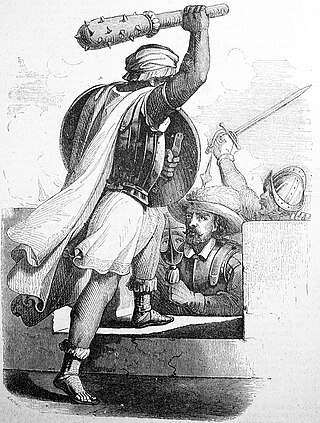 7
Cahuide, fue un noble y guerrero inca que participó en la batalla de Sacsayhuamán, durante la guerra de reconquista liderada por Manco Inca. Y es conocido porque, al ver la fortaleza que defendía...
7
Cahuide, fue un noble y guerrero inca que participó en la batalla de Sacsayhuamán, durante la guerra de reconquista liderada por Manco Inca. Y es conocido porque, al ver la fortaleza que defendía...
Abel-Nicolas Bergasse du Petit-Thouars
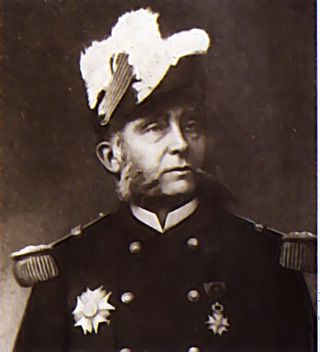 7
Abel-Nicolas Georges Henri Bergasse du Petit-Thouars was a French Navy officer who took part in the Crimean War, the Boshin War, the Franco-Prussian War and the War of the Pacific. He is considered a...
7
Abel-Nicolas Georges Henri Bergasse du Petit-Thouars was a French Navy officer who took part in the Crimean War, the Boshin War, the Franco-Prussian War and the War of the Pacific. He is considered a...
Jorge Basadre
 7
Jorge Alfredo Basadre Grohmann was a Peruvian historian known for his extensive publications about the independent history of his country. He served during two different administrations as Minister...
7
Jorge Alfredo Basadre Grohmann was a Peruvian historian known for his extensive publications about the independent history of his country. He served during two different administrations as Minister...
Inca Garcilaso de la Vega
 7
Inca Garcilaso de la Vega, born Gómez Suárez de Figueroa and known as El Inca, was a chronicler and writer born in the Viceroyalty of Peru. Sailing to Spain at 21, he was educated informally there,...
7
Inca Garcilaso de la Vega, born Gómez Suárez de Figueroa and known as El Inca, was a chronicler and writer born in the Viceroyalty of Peru. Sailing to Spain at 21, he was educated informally there,...
Víctor Andrés Belaúnde
 7
Víctor Andrés Belaúnde Diez Canseco was a Peruvian diplomat, politician, philosopher and scholar. He chaired the 14th Session and the 4th Emergency Special Session of the United Nations General...
7
Víctor Andrés Belaúnde Diez Canseco was a Peruvian diplomat, politician, philosopher and scholar. He chaired the 14th Session and the 4th Emergency Special Session of the United Nations General...
José de Gálvez, 1st Marquess of Sonora
 7
José de Gálvez y Gallardo, 1st Marquess of Sonora was a Spanish lawyer and Visitador general in New Spain (1764–1772); later appointed to the Council of the Indies (1775–1787). He was one of the...
7
José de Gálvez y Gallardo, 1st Marquess of Sonora was a Spanish lawyer and Visitador general in New Spain (1764–1772); later appointed to the Council of the Indies (1775–1787). He was one of the...
Christopher Columbus
 7
Christopher Columbus was an Italian explorer and navigator from the Republic of Genoa who completed four Spanish-based voyages across the Atlantic Ocean sponsored by the Catholic Monarchs, opening...
7
Christopher Columbus was an Italian explorer and navigator from the Republic of Genoa who completed four Spanish-based voyages across the Atlantic Ocean sponsored by the Catholic Monarchs, opening...
Saint Joseph
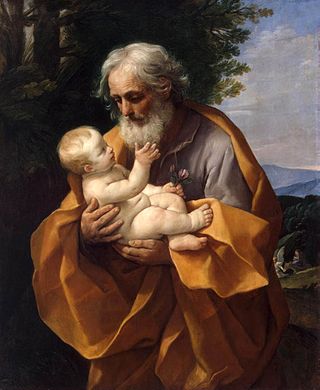 7
Joseph was a 1st-century Jewish man of Nazareth who, according to the canonical Gospels, was married to Mary, the mother of Jesus, and was the legal father of Jesus.
7
Joseph was a 1st-century Jewish man of Nazareth who, according to the canonical Gospels, was married to Mary, the mother of Jesus, and was the legal father of Jesus.
José Pardo y Barreda
 6
José Simón Pardo y Barreda was a Peruvian politician who served as the 35th (1904–1908) and 39th (1915–1919) President of Peru.
6
José Simón Pardo y Barreda was a Peruvian politician who served as the 35th (1904–1908) and 39th (1915–1919) President of Peru.
Agustín Gamarra
 6
Agustín Gamarra Messia was a Peruvian soldier and politician, who served as the 4th and 6th President of Peru.
6
Agustín Gamarra Messia was a Peruvian soldier and politician, who served as the 4th and 6th President of Peru.
Elías Aguirre
 6
Remigio Elías Aguirre Romero fue un destacado marino peruano, héroe de la Guerra del Pacífico. Como segundo comandante del monitor Huáscar, murió en el combate de Angamos.
6
Remigio Elías Aguirre Romero fue un destacado marino peruano, héroe de la Guerra del Pacífico. Como segundo comandante del monitor Huáscar, murió en el combate de Angamos.
Anthony of Padua
 6
Anthony of Padua, OFM or Anthony of Lisbon was a Portuguese Catholic priest and friar of the Franciscan Order.
6
Anthony of Padua, OFM or Anthony of Lisbon was a Portuguese Catholic priest and friar of the Franciscan Order.
Saint Anne
 6
According to apocrypha, as well as Christian and Islamic tradition, Saint Anne was the mother of Mary, the wife of Joachim and the maternal grandmother of Jesus. Mary's mother is not named in the...
6
According to apocrypha, as well as Christian and Islamic tradition, Saint Anne was the mother of Mary, the wife of Joachim and the maternal grandmother of Jesus. Mary's mother is not named in the...
María Parado de Bellido
 6
María Parado de Bellido was an indigenous Peruvian revolutionary during the struggle for independence from Spain.
6
María Parado de Bellido was an indigenous Peruvian revolutionary during the struggle for independence from Spain.
Mary, mother of Jesus
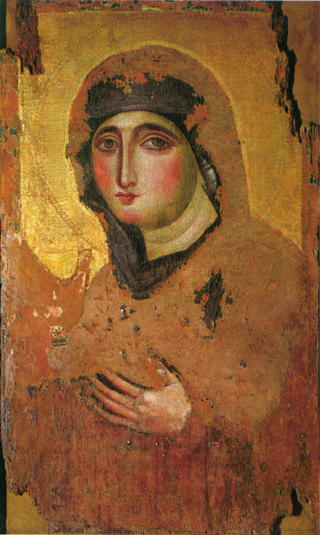 6
Mary was a first-century Jewish woman of Nazareth, the wife of Joseph and the mother of Jesus. She is a central figure of Christianity, venerated under various titles such as virgin or queen, many of...
6
Mary was a first-century Jewish woman of Nazareth, the wife of Joseph and the mother of Jesus. She is a central figure of Christianity, venerated under various titles such as virgin or queen, many of...
Hipólito Unanue
 6
José Hipólito Unanue y Pavón was a physician, naturalist, meteorologist, cosmographer, the first Minister of Finance of Peru, Minister of Foreign Affairs, Protomédico, university professor, founder...
6
José Hipólito Unanue y Pavón was a physician, naturalist, meteorologist, cosmographer, the first Minister of Finance of Peru, Minister of Foreign Affairs, Protomédico, university professor, founder...
Juan Antonio Álvarez de Arenales
 6
Juan Antonio Álvarez de Arenales was an Argentine general of Spanish origin that fought in the war for the United Provinces of the Río de la Plata, Chile and Peru.
6
Juan Antonio Álvarez de Arenales was an Argentine general of Spanish origin that fought in the war for the United Provinces of the Río de la Plata, Chile and Peru.
José Enrique Varela
 6
José Enrique Varela Iglesias, 1st Marquis of San Fernando de Varela was a Spanish military officer noted for his role as a Nationalist commander in the Spanish Civil War.
6
José Enrique Varela Iglesias, 1st Marquis of San Fernando de Varela was a Spanish military officer noted for his role as a Nationalist commander in the Spanish Civil War.
Francis of Assisi
 5
Giovanni di Pietro di Bernardone, known as Francis of Assisi, was an Italian mystic, poet and Catholic friar who founded the religious order of the Franciscans. He was inspired to lead a Christian...
5
Giovanni di Pietro di Bernardone, known as Francis of Assisi, was an Italian mystic, poet and Catholic friar who founded the religious order of the Franciscans. He was inspired to lead a Christian...
Néstor Gambetta Bonatti
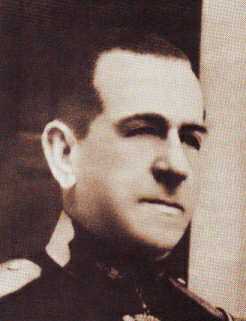 5
Néstor Fortunato Gambetta Bonatti, fue un militar, político y promotor cultural peruano reconocido por sus servicios a la patria y en el campo de las letras.
5
Néstor Fortunato Gambetta Bonatti, fue un militar, político y promotor cultural peruano reconocido por sus servicios a la patria y en el campo de las letras.
Juan Velasco Alvarado
 5
Juan Francisco Velasco Alvarado was a Peruvian general who served as the President of Peru after a successful coup d'état against Fernando Belaúnde's presidency in 1968. Under his presidency,...
5
Juan Francisco Velasco Alvarado was a Peruvian general who served as the President of Peru after a successful coup d'état against Fernando Belaúnde's presidency in 1968. Under his presidency,...
José Faustino Sánchez Carrión
 5
José Faustino Sánchez Carrión, was a pro-independence politician from Peru. Also known as the "Solitario de Sayán", he had a decisive role in the establishment of the republican system of government...
5
José Faustino Sánchez Carrión, was a pro-independence politician from Peru. Also known as the "Solitario de Sayán", he had a decisive role in the establishment of the republican system of government...
Saint Dominic
 5
Saint Dominic,, also known as Dominic de Guzmán, was a Castilian Catholic priest and the founder of the Dominican Order. He is the patron saint of astronomers and natural scientists, and he and his...
5
Saint Dominic,, also known as Dominic de Guzmán, was a Castilian Catholic priest and the founder of the Dominican Order. He is the patron saint of astronomers and natural scientists, and he and his...
Manuel González Prada
 5
Jose Manuel de los Reyes González de Prada y Ulloa was a Peruvian politician and anarchist, literary critic and director of the National Library of Peru. The first writer to criticize the oligarchy...
5
Jose Manuel de los Reyes González de Prada y Ulloa was a Peruvian politician and anarchist, literary critic and director of the National Library of Peru. The first writer to criticize the oligarchy...
John Bosco
 5
John Melchior Bosco, SDB, popularly known as Don Bosco, was an Italian Catholic priest, educator and writer of the 19th century. While working in Turin, where the population suffered many of the ill...
5
John Melchior Bosco, SDB, popularly known as Don Bosco, was an Italian Catholic priest, educator and writer of the 19th century. While working in Turin, where the population suffered many of the ill...
César Canevaro
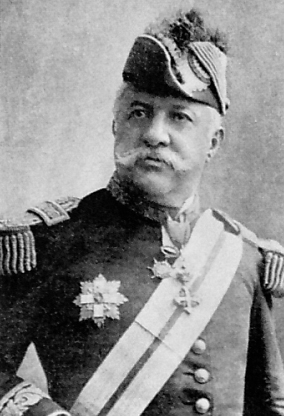 5
César Canevaro Valega was a Peruvian General and politician. He fought in the war against Chile, using his own finances and personal relationships to fund the endeavor.
5
César Canevaro Valega was a Peruvian General and politician. He fought in the war against Chile, using his own finances and personal relationships to fund the endeavor.
Lorenzo Ruiz
 5
Lorenzo Ruiz, also called Saint Lorenzo of Manila, is a Filipino saint venerated in the Catholic Church. A Chinese Filipino, he became his country's protomartyr after his execution in Japan by the...
5
Lorenzo Ruiz, also called Saint Lorenzo of Manila, is a Filipino saint venerated in the Catholic Church. A Chinese Filipino, he became his country's protomartyr after his execution in Japan by the...
Flora Tristan
 5
Flore Célestine Thérèse Henriette Tristán y Moscoso, better known as Flora Tristan, was a French-Peruvian writer and socialist activist. She made important contributions to early feminist theory, and...
5
Flore Célestine Thérèse Henriette Tristán y Moscoso, better known as Flora Tristan, was a French-Peruvian writer and socialist activist. She made important contributions to early feminist theory, and...
Alejandro Velasco Astete
 4
Alejandro Velasco Astete was a Peruvian pilot, most recognizable for being the first man to fly over the Andes. He was 28 years old upon his death.
4
Alejandro Velasco Astete was a Peruvian pilot, most recognizable for being the first man to fly over the Andes. He was 28 years old upon his death.
José Trinidad Morán
 4
José Trinidad Morán y Manzano fue un militar venezolano, obtuvo la nacionalidad peruana por sus servicios prestados en la guerra de independencia. Participó en las campañas de liberación de Ecuador,...
4
José Trinidad Morán y Manzano fue un militar venezolano, obtuvo la nacionalidad peruana por sus servicios prestados en la guerra de independencia. Participó en las campañas de liberación de Ecuador,...
Belisario Suárez
 4
Manuel Belisario Suárez y Vargas (1833-1910) was a Peruvian colonel and politician that was notable for serving in several battles of the War of the Pacific as well as holding several offices within...
4
Manuel Belisario Suárez y Vargas (1833-1910) was a Peruvian colonel and politician that was notable for serving in several battles of the War of the Pacific as well as holding several offices within...
Lloque Yupanqui
 4
Lloque Yupanqui was the third Sapa Inca of the Kingdom of Cuzco and a member of the Hurin dynasty.
4
Lloque Yupanqui was the third Sapa Inca of the Kingdom of Cuzco and a member of the Hurin dynasty.
Ignacio Merino
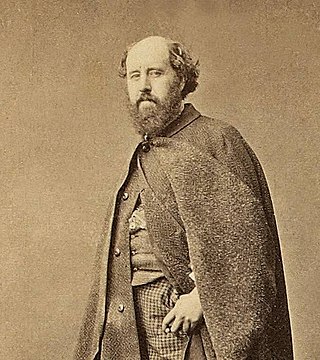 4
Ignacio Merino Muñoz was a Peruvian painter notable for historical and costumbrista works, and considered the founder of the Peruvian school of painting. Beginning at age 6, he spent much of his life...
4
Ignacio Merino Muñoz was a Peruvian painter notable for historical and costumbrista works, and considered the founder of the Peruvian school of painting. Beginning at age 6, he spent much of his life...
Lizardo Montero Flores
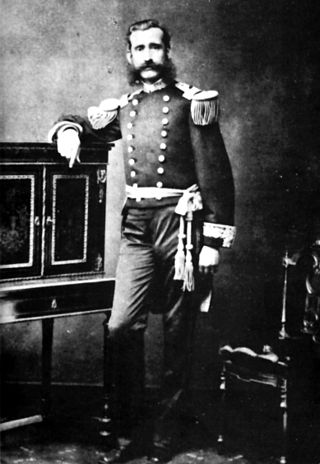 4
Juan Lizardo Montero Flores was a Peruvian soldier and politician who held the provisional Presidency of Peru from 1881 to 1883, replacing President Francisco García Calderón, during the Chilean...
4
Juan Lizardo Montero Flores was a Peruvian soldier and politician who held the provisional Presidency of Peru from 1881 to 1883, replacing President Francisco García Calderón, during the Chilean...
Tomás Marsano
 4
Tomás Marsano Gutiérrez fue un empresario minero e inmobiliario peruano.
4
Tomás Marsano Gutiérrez fue un empresario minero e inmobiliario peruano.
Sebastián Barranca
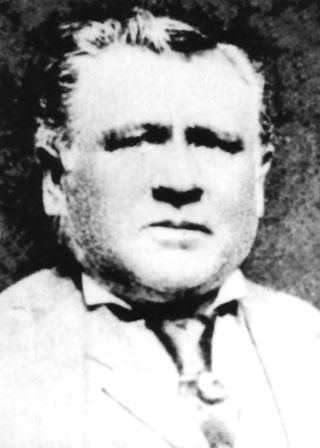 4
José Sebastián Barranca Lovera fue un científico naturalista, filólogo y maestro peruano. Hizo notables estudios sobre la flora y fauna del Perú, y también sobre sus riquezas minerales. Se...
4
José Sebastián Barranca Lovera fue un científico naturalista, filólogo y maestro peruano. Hizo notables estudios sobre la flora y fauna del Perú, y también sobre sus riquezas minerales. Se...
Mariano Necochea
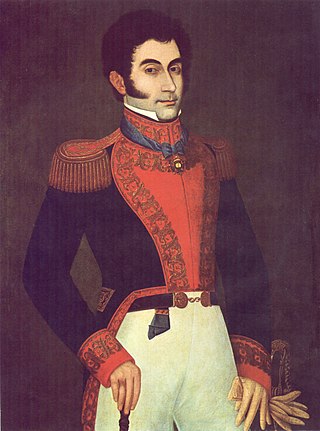 4
Mariano Necochea was an Argentine-Peruvian soldier.
4
Mariano Necochea was an Argentine-Peruvian soldier.
José Bernardo de Tagle y Portocarrero, 4th Marquess of Torre Tagle
 4
José Bernardo de Tagle y Portocarrero, 4th Marquess of Torre Tagle, was a Peruvian soldier and politician who served as the Interim President of Peru in 1823 as well as the second President of Peru...
4
José Bernardo de Tagle y Portocarrero, 4th Marquess of Torre Tagle, was a Peruvian soldier and politician who served as the Interim President of Peru in 1823 as well as the second President of Peru...
Antonio Miró Quesada de la Guerra
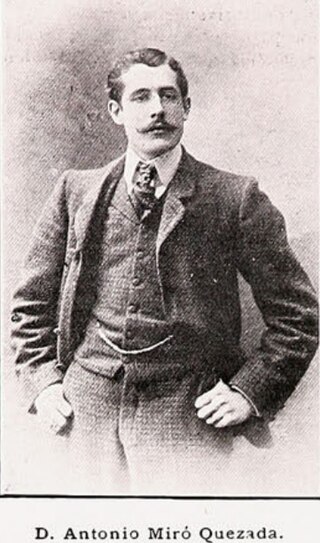 4
Antonio Tomás Miró Quesada de la Guerra fue un periodista, abogado, diplomático y político peruano. Director del diario El Comercio.
4
Antonio Tomás Miró Quesada de la Guerra fue un periodista, abogado, diplomático y político peruano. Director del diario El Comercio.
Francisco Xavier de Luna Pizarro
 4
Francisco Xavier de Luna Pizarro was a Peruvian priest, politician and lawyer. He served as Archbishop of Lima from 1846 to 1855, deputy for Cusco and Arequipa, and President of the Constituent...
4
Francisco Xavier de Luna Pizarro was a Peruvian priest, politician and lawyer. He served as Archbishop of Lima from 1846 to 1855, deputy for Cusco and Arequipa, and President of the Constituent...
Teresa Urrea
 4
Teresa Urrea, often referred to as Teresita and also known as Santa Teresa or La Santa de Cábora among the Mayo, was a Mexican mystic, folk healer, and revolutionary insurgent.
4
Teresa Urrea, often referred to as Teresita and also known as Santa Teresa or La Santa de Cábora among the Mayo, was a Mexican mystic, folk healer, and revolutionary insurgent.
Andrés Aramburú Sarrio
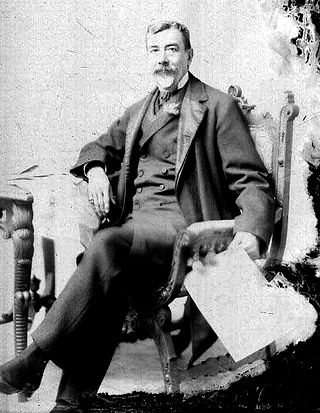 4
Andrés Avelino Aramburú Sarrio fue un periodista y político peruano.
4
Andrés Avelino Aramburú Sarrio fue un periodista y político peruano.
Víctor Raúl Haya de la Torre
 4
Víctor Raúl Haya de la Torre was a Peruvian politician, philosopher, and author who founded the American Popular Revolutionary Alliance (APRA) political movement, the oldest currently existing...
4
Víctor Raúl Haya de la Torre was a Peruvian politician, philosopher, and author who founded the American Popular Revolutionary Alliance (APRA) political movement, the oldest currently existing...
Franklin D. Roosevelt
 4
Franklin Delano Roosevelt, commonly known by his initials FDR, was an American statesman and politician who served as the 32nd president of the United States from 1933 until his death in 1945. He was...
4
Franklin Delano Roosevelt, commonly known by his initials FDR, was an American statesman and politician who served as the 32nd president of the United States from 1933 until his death in 1945. He was...
Sergio Bernales
 4
Sergio Bruno Bernales García, fue un médico y catedrático universitario peruano. Fue decano de la Facultad de Medicina Humana de San Marcos, así como vicerrector y rector interino en 1948.
4
Sergio Bruno Bernales García, fue un médico y catedrático universitario peruano. Fue decano de la Facultad de Medicina Humana de San Marcos, así como vicerrector y rector interino en 1948.
Ferdinand III of Castile
 3
Ferdinand III, called the Saint, was King of Castile from 1217 and King of León from 1230 as well as King of Galicia from 1231. He was the son of Alfonso IX of León and Berenguela of Castile. Through...
3
Ferdinand III, called the Saint, was King of Castile from 1217 and King of León from 1230 as well as King of Galicia from 1231. He was the son of Alfonso IX of León and Berenguela of Castile. Through...
Juan Antonio Pezet
 3
Juan Antonio Pezet y Rodríguez de la Piedra was a Peruvian military officer and politician who served in the positions of Secretary of War, First Vice President and the 16th President of Peru...
3
Juan Antonio Pezet y Rodríguez de la Piedra was a Peruvian military officer and politician who served in the positions of Secretary of War, First Vice President and the 16th President of Peru...
Juan Fanning
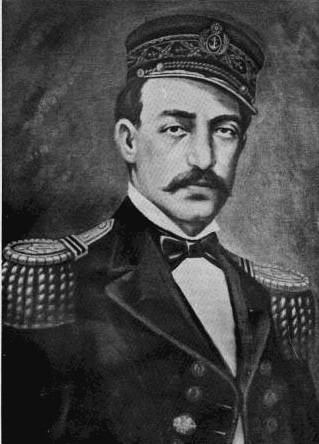 3
Captain Juan Fanning was a naval officer in the Peruvian military who led a memorable charge against the invading Chilean army during the Battle of Miraflores. Fanning was mortally wounded during the...
3
Captain Juan Fanning was a naval officer in the Peruvian military who led a memorable charge against the invading Chilean army during the Battle of Miraflores. Fanning was mortally wounded during the...
Francisco Antonio de Zela
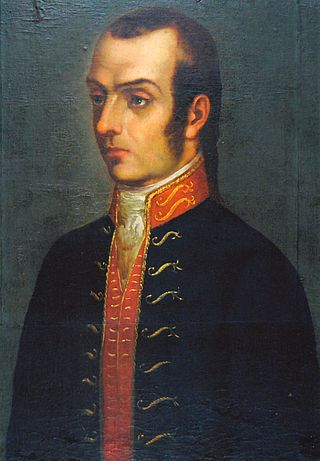 3
Francisco Antonio de Zela y Arizaga is notable for sending forth the first anti-Spanish rebellion in the Peruvian city of Tacna on June 20, 1811, in an attempt to start the independence of Peru. De...
3
Francisco Antonio de Zela y Arizaga is notable for sending forth the first anti-Spanish rebellion in the Peruvian city of Tacna on June 20, 1811, in an attempt to start the independence of Peru. De...
George Washington
 3
George Washington was an American Founding Father, military officer, and politician who served as the first president of the United States from 1789 to 1797. Appointed by the Second Continental...
3
George Washington was an American Founding Father, military officer, and politician who served as the first president of the United States from 1789 to 1797. Appointed by the Second Continental...
Cápac Yupanqui
 3
Cápac Yupanqui was the fifth Sapa Inca of the Kingdom of Cusco and the last of the Hurin dynasty.
3
Cápac Yupanqui was the fifth Sapa Inca of the Kingdom of Cusco and the last of the Hurin dynasty.
Sinchi Roca
 3
Sinchi Roca, Sinchi Rocca, Cinchi Roca, Sinchi Ruq'a or Sinchi Ruq'a Inka was the second Sapa Inca of the Kingdom of Cusco and a member of the Hurin dynasty.
3
Sinchi Roca, Sinchi Rocca, Cinchi Roca, Sinchi Ruq'a or Sinchi Ruq'a Inka was the second Sapa Inca of the Kingdom of Cusco and a member of the Hurin dynasty.
Elizabeth of Portugal
 3
Elizabeth of Aragon, more commonly known as Elizabeth of Portugal, was queen consort of Portugal who is venerated as a saint in the Roman Catholic Church.
3
Elizabeth of Aragon, more commonly known as Elizabeth of Portugal, was queen consort of Portugal who is venerated as a saint in the Roman Catholic Church.
Carlos Izaguirre Alzamora
 3
Carlos Alberto Izaguirre Alzamora fue un abogado y político peruano. Miembro del Partido Aprista Peruano.
3
Carlos Alberto Izaguirre Alzamora fue un abogado y político peruano. Miembro del Partido Aprista Peruano.
Luis Miguel Sánchez Cerro
 3
Luis Miguel Sánchez Cerro was a high-ranking Peruvian army officer who served as the 41st President of Peru, from 1931 to 1933 as well as Interim President of Peru, officially as the President of the...
3
Luis Miguel Sánchez Cerro was a high-ranking Peruvian army officer who served as the 41st President of Peru, from 1931 to 1933 as well as Interim President of Peru, officially as the President of the...
Ricardo Rivera Schreiber
 3
Ricardo Ernesto Víctor Rivera Schreiber, GBE was a Peruvian diplomat who served as Minister of Foreign Affairs between 1952 and 1954.
3
Ricardo Ernesto Víctor Rivera Schreiber, GBE was a Peruvian diplomat who served as Minister of Foreign Affairs between 1952 and 1954.
Juan Manuel Polar
 3
Juan Manuel Polar (born 24 September 1983 in Lima is a racing driver from Peru. He has previously competed in the Indy Lights, Spanish Formula Three Championship and Formula Renault among other...
3
Juan Manuel Polar (born 24 September 1983 in Lima is a racing driver from Peru. He has previously competed in the Indy Lights, Spanish Formula Three Championship and Formula Renault among other...
Augusto Pérez Araníbar
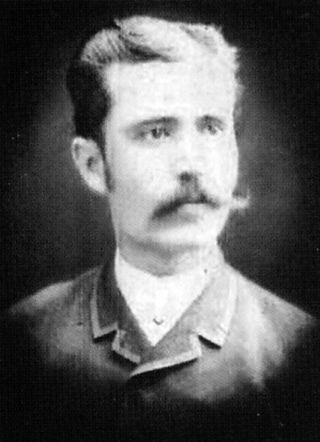 3
Augusto Pérez Araníbar was a Peruvian physician and philanthropist concerned with social aspects of Peru. He was born in Arequipa on October 26, 1858, and died in Lima in March 1948. He promoted...
3
Augusto Pérez Araníbar was a Peruvian physician and philanthropist concerned with social aspects of Peru. He was born in Arequipa on October 26, 1858, and died in Lima in March 1948. He promoted...
Daniel Hernández Morillo
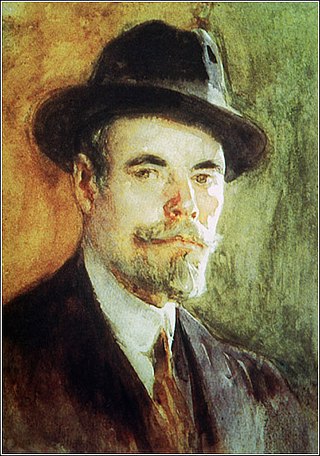 3
Daniel Hernández Morillo was a Peruvian painter in the Academic style who spent most of his working life in Paris. He also served as the first Director of the Escuela Nacional de Bellas Artes.
3
Daniel Hernández Morillo was a Peruvian painter in the Academic style who spent most of his working life in Paris. He also served as the first Director of the Escuela Nacional de Bellas Artes.
Augustine of Hippo
 3
Augustine of Hippo, also known as Saint Augustine, was a theologian and philosopher of Berber origin and the bishop of Hippo Regius in Numidia, Roman North Africa. His writings influenced the...
3
Augustine of Hippo, also known as Saint Augustine, was a theologian and philosopher of Berber origin and the bishop of Hippo Regius in Numidia, Roman North Africa. His writings influenced the...
Víctor Larco Herrera
 3
Victor Larco Herrera was a prominent politician, farmer and philanthropist from Peru. He devoted much of his life to social and cultural affairs. Since 1945, the Victor Larco Herrera District was...
3
Victor Larco Herrera was a prominent politician, farmer and philanthropist from Peru. He devoted much of his life to social and cultural affairs. Since 1945, the Victor Larco Herrera District was...
Michael (archangel)
 3
Michael, also called Saint Michael the Archangel, Archangel Michael and Saint Michael the Taxiarch is an archangel in Judaism, Christianity, Islam, and the Baha'i faith. The earliest surviving...
3
Michael, also called Saint Michael the Archangel, Archangel Michael and Saint Michael the Taxiarch is an archangel in Judaism, Christianity, Islam, and the Baha'i faith. The earliest surviving...
Abraham Valdelomar
 3
Pedro Abraham Valdelomar Pinto was a Peruvian narrator, poet, journalist, essayist and dramatist; he is considered the founder of the avant-garde in Peru, although more for his dandy-like public...
3
Pedro Abraham Valdelomar Pinto was a Peruvian narrator, poet, journalist, essayist and dramatist; he is considered the founder of the avant-garde in Peru, although more for his dandy-like public...
Roberto Goyeneche
 3
Roberto Goyeneche was an Argentine tango singer who epitomized the archetype of 1950s Buenos Aires' bohemian life, and became a living legend in the local music scene.
3
Roberto Goyeneche was an Argentine tango singer who epitomized the archetype of 1950s Buenos Aires' bohemian life, and became a living legend in the local music scene.
Antonio Guzmán Blanco
 3
Antonio Leocadio Guzmán Blanco was a Venezuelan military leader, statesman, diplomat and politician. He was the president of Venezuela for three separate terms, from 1870 until 1877, from 1879 until...
3
Antonio Leocadio Guzmán Blanco was a Venezuelan military leader, statesman, diplomat and politician. He was the president of Venezuela for three separate terms, from 1870 until 1877, from 1879 until...
Nicolás Arriola
 3
José Nicolás Arriola fue un militar, estratega, empresario y terrateniente argentino que participó activamente en las Guerras de Independencia Hispanoamericanas.
3
José Nicolás Arriola fue un militar, estratega, empresario y terrateniente argentino que participó activamente en las Guerras de Independencia Hispanoamericanas.
John F. Kennedy
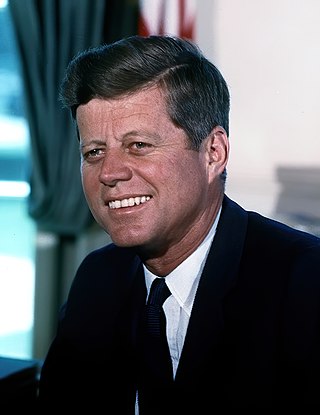 3
John Fitzgerald Kennedy, often referred to as JFK, was an American politician who served as the 35th president of the United States from 1961 until his assassination in 1963. He was the youngest...
3
John Fitzgerald Kennedy, often referred to as JFK, was an American politician who served as the 35th president of the United States from 1961 until his assassination in 1963. He was the youngest...
Alipio Ponce
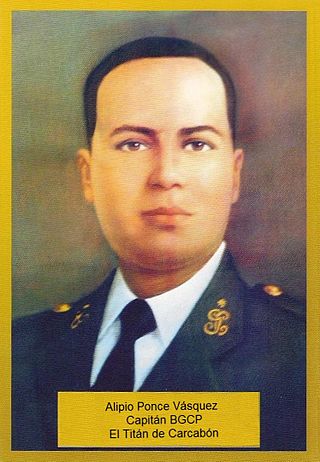 3
Alipio Ponce Vásquez was a Peruvian police officer who fought and died during the 1941 Ecuadorian–Peruvian War.
3
Alipio Ponce Vásquez was a Peruvian police officer who fought and died during the 1941 Ecuadorian–Peruvian War.
Paul the Apostle
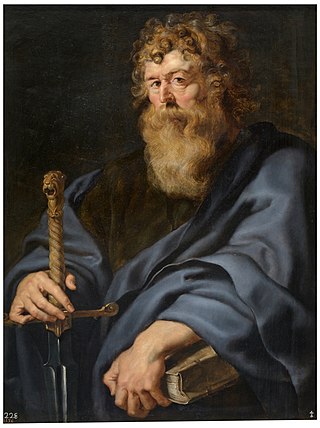 3
Paul, commonly known as Paul the Apostle and Saint Paul, was a Christian apostle who spread the teachings of Jesus in the first-century world. For his contributions towards the New Testament, he is...
3
Paul, commonly known as Paul the Apostle and Saint Paul, was a Christian apostle who spread the teachings of Jesus in the first-century world. For his contributions towards the New Testament, he is...
Edward Jan Habich
 3
Edward Jan Habich was a Polish engineer and mathematician. In 1876, he founded the National University of Engineering, a renowned engineering school in Lima, Peru. He was a member of the Peruvian...
3
Edward Jan Habich was a Polish engineer and mathematician. In 1876, he founded the National University of Engineering, a renowned engineering school in Lima, Peru. He was a member of the Peruvian...
Manuel F. Segura
 3
Manuel Felimon Segura was a colonel of the Armed Forces of the Philippines with assigned serial number 0-3547 AFP. He was G-1 and adjutant general in the General Headquarters of the Cebuano...
3
Manuel Felimon Segura was a colonel of the Armed Forces of the Philippines with assigned serial number 0-3547 AFP. He was G-1 and adjutant general in the General Headquarters of the Cebuano...
Jesus
 3
Jesus, also referred to as Jesus Christ, Jesus of Nazareth, and many other names and titles, was a first-century Jewish preacher and religious leader. He is the central figure of Christianity, the...
3
Jesus, also referred to as Jesus Christ, Jesus of Nazareth, and many other names and titles, was a first-century Jewish preacher and religious leader. He is the central figure of Christianity, the...
Cristóbal Magallanes Jara
 3
Cristóbal Magallanes Jara, also known as Christopher Magallanes, was a Mexican Catholic priest and martyr who was killed without trial on the way to say Mass during the Cristero War. He had faced...
3
Cristóbal Magallanes Jara, also known as Christopher Magallanes, was a Mexican Catholic priest and martyr who was killed without trial on the way to say Mass during the Cristero War. He had faced...
Juan Francisco de Vidal
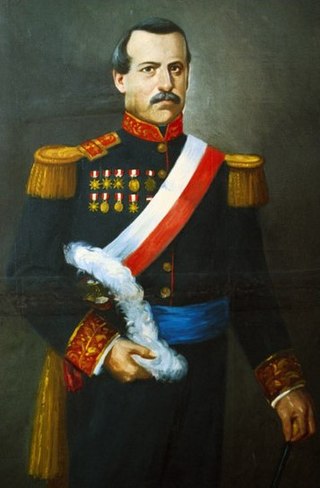 3
Juan Francisco de Vidal La Hoz served as the 8th President of Peru for a brief period between 1842 and 1843. Juan Francisco also helped with creating a certain version of laws for the rights of...
3
Juan Francisco de Vidal La Hoz served as the 8th President of Peru for a brief period between 1842 and 1843. Juan Francisco also helped with creating a certain version of laws for the rights of...
Juan Pablo Fernandini
 3
Juan Pablo Fernandini Juliani fue un militar peruano.
3
Juan Pablo Fernandini Juliani fue un militar peruano.
Enrique Palacios (militar)
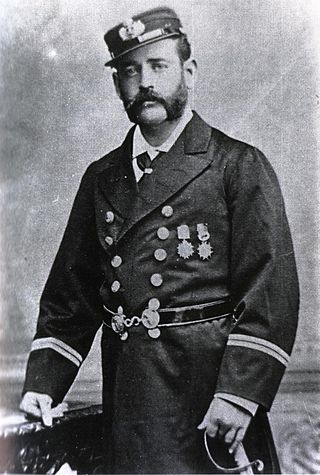 3
Enrique Sixto Palacios de Mendiburu fue un militar peruano, héroe de la guerra del Pacífico. Con el grado de teniente segundo AP, fue uno de los últimos comandantes del monitor Huáscar, a bordo del...
3
Enrique Sixto Palacios de Mendiburu fue un militar peruano, héroe de la guerra del Pacífico. Con el grado de teniente segundo AP, fue uno de los últimos comandantes del monitor Huáscar, a bordo del...
Pedro Ruiz Gallo
 3
Pedro Ruiz Gallo was a Peruvian polymath, serving as a soldier and inventor, also working as a watchmaker, mechanic, musician, painter, researcher, doctor, and explorer, nationally considered one of...
3
Pedro Ruiz Gallo was a Peruvian polymath, serving as a soldier and inventor, also working as a watchmaker, mechanic, musician, painter, researcher, doctor, and explorer, nationally considered one of...
Vicente Morales Duárez
 3
Vicente José Morales y Duárez de la Quadra fue un jurista criollo peruano, quien llegó a ser Presidente de las Cortes de Cádiz.
3
Vicente José Morales y Duárez de la Quadra fue un jurista criollo peruano, quien llegó a ser Presidente de las Cortes de Cádiz.
Joaquín Capelo
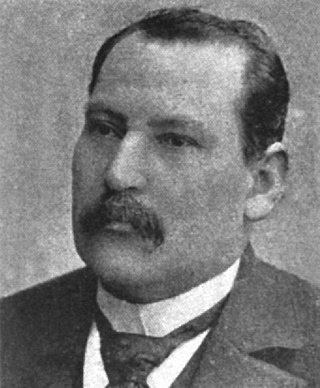 3
Joaquín Francisco Lucio Capelo Ruiz, fue un ingeniero civil, funcionario público, político y sociólogo peruano. Mostró especial interés en el desarrollo integral de la región amazónica, que hasta...
3
Joaquín Francisco Lucio Capelo Ruiz, fue un ingeniero civil, funcionario público, político y sociólogo peruano. Mostró especial interés en el desarrollo integral de la región amazónica, que hasta...
Eduardo Ordóñez
 3
Eduardo Ordóñez Munguira was a Puerto Rican footballer who is last known to have played as a midfielder for Atlético Madrid, in addition to having been a Puerto Rican baritone.
3
Eduardo Ordóñez Munguira was a Puerto Rican footballer who is last known to have played as a midfielder for Atlético Madrid, in addition to having been a Puerto Rican baritone.
José Santos Chocano
 3
José Santos Chocano Gastañodi, more commonly known by his pseudonym "El Cantor de América", was a Peruvian poet, writer and diplomat, whose work was widely praised across Europe and Latin America....
3
José Santos Chocano Gastañodi, more commonly known by his pseudonym "El Cantor de América", was a Peruvian poet, writer and diplomat, whose work was widely praised across Europe and Latin America....
Pedro de Toledo, 1st Marquis of Mancera
 3
Pedro Álvarez de Toledo y Leiva, 1st Marquis of Mancera, was a Spanish nobleman, general, colonial administrator, and diplomat. He served as Captain General of Galicia and Viceroy of Peru from...
3
Pedro Álvarez de Toledo y Leiva, 1st Marquis of Mancera, was a Spanish nobleman, general, colonial administrator, and diplomat. He served as Captain General of Galicia and Viceroy of Peru from...
Ciro Alegría
 3
Ciro Alegría Bazán was a Peruvian journalist, politician, and novelist.
3
Ciro Alegría Bazán was a Peruvian journalist, politician, and novelist.
Clare of Assisi
 3
Chiara Offreduccio, known as Clare of Assisi, was an Italian saint who was one of the first followers of Francis of Assisi.
3
Chiara Offreduccio, known as Clare of Assisi, was an Italian saint who was one of the first followers of Francis of Assisi.
Luis Montero
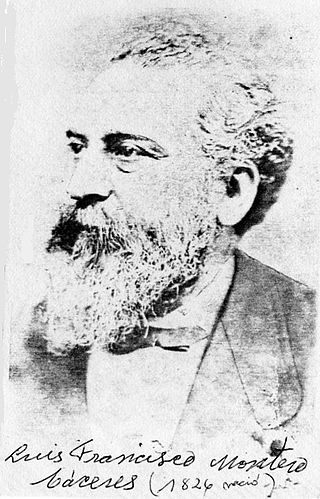 3
Luis Montero, fue un pintor académico peruano uno de los más importantes y más referenciados en el siglo XIX. En 1847 recibió una "beca" del presidente Ramón Castilla para estudiar en la Academia de...
3
Luis Montero, fue un pintor académico peruano uno de los más importantes y más referenciados en el siglo XIX. En 1847 recibió una "beca" del presidente Ramón Castilla para estudiar en la Academia de...
Javier Heraud
 3
Javier Heraud Pérez was a Peruvian poet and member of the Ejército de Liberación Nacional (ELN). In his early life he studied at Markham College and later he continued his studies at Pontifical...
3
Javier Heraud Pérez was a Peruvian poet and member of the Ejército de Liberación Nacional (ELN). In his early life he studied at Markham College and later he continued his studies at Pontifical...
Sixto Durán Ballén
 3
Sixto Alfonso Durán-Ballén Cordovez was an Ecuadorian political figure and architect. He served as Mayor of Quito between 1970 and 1978. In 1951, he co-founded a political party, the Social Christian...
3
Sixto Alfonso Durán-Ballén Cordovez was an Ecuadorian political figure and architect. He served as Mayor of Quito between 1970 and 1978. In 1951, he co-founded a political party, the Social Christian...
Emilio Fernández
 3
Emilio "El Indio" Fernández Romo was a Mexican film director, actor and screenwriter. He was one of the most prolific film directors of the Golden Age of Mexican cinema in the 1940s and 1950s. He is...
3
Emilio "El Indio" Fernández Romo was a Mexican film director, actor and screenwriter. He was one of the most prolific film directors of the Golden Age of Mexican cinema in the 1940s and 1950s. He is...
Emilio Cavenecia
 2
Emilio Cavenecia was a nineteenth-century Peruvian military hero killed in battle during the War of the Pacific. Emilio Cavenecia Avenue, in the financial district of San Isidro, Peru, is named in...
2
Emilio Cavenecia was a nineteenth-century Peruvian military hero killed in battle during the War of the Pacific. Emilio Cavenecia Avenue, in the financial district of San Isidro, Peru, is named in...
José A. Larco
 2
Jose Alberto Larco nació en Alghero, Italia, en 1830; arribó al Perú en 1838 para trabajar con su tío Francisco Larco, en Lima. Fue promotor del Hospital Italiano de Lima, Presidente fundador del...
2
Jose Alberto Larco nació en Alghero, Italia, en 1830; arribó al Perú en 1838 para trabajar con su tío Francisco Larco, en Lima. Fue promotor del Hospital Italiano de Lima, Presidente fundador del...
Felipe Pardo y Aliaga
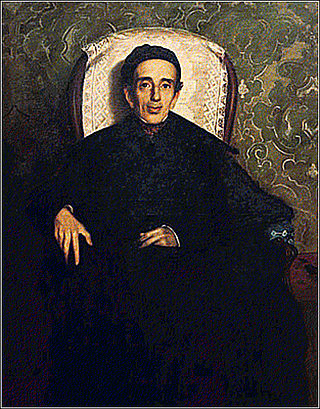 2
Felipe Pardo y Aliaga was a Peruvian poet, satirist, playwright, lawyer and politician.
2
Felipe Pardo y Aliaga was a Peruvian poet, satirist, playwright, lawyer and politician.
Toribio Romo González
 2
Toribio Romo González, known as Saint Toribio Romo was a Mexican Catholic priest and martyr who was killed during the anti-clerical persecutions of the Cristero War. Beatified and later canonized by...
2
Toribio Romo González, known as Saint Toribio Romo was a Mexican Catholic priest and martyr who was killed during the anti-clerical persecutions of the Cristero War. Beatified and later canonized by...
Rufino Torrico
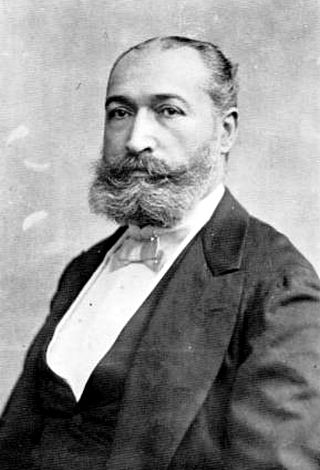 2
José Rufino Torrico de Mendiburu fue un militar y político peruano y alcalde de Lima en tres ocasiones: en 1880-1881, en 1883-1884 y en 1895. En enero de 1881, su gestión ayudó a detener en parte la...
2
José Rufino Torrico de Mendiburu fue un militar y político peruano y alcalde de Lima en tres ocasiones: en 1880-1881, en 1883-1884 y en 1895. En enero de 1881, su gestión ayudó a detener en parte la...
Pedro Conde
 2
Pedro Conde was an Argentine colonel. He fought against the British invasions of the Río de la Plata, and the 1814 siege of Montevideo. He joined the Army of the Andes and fought in the battles of...
2
Pedro Conde was an Argentine colonel. He fought against the British invasions of the Río de la Plata, and the 1814 siege of Montevideo. He joined the Army of the Andes and fought in the battles of...
José Manso de Velasco, 1st Count of Superunda
 2
José Antonio Manso de Velasco y Sánchez de Samaniego, KOS was a Spanish soldier and politician who served as governor of Chile and viceroy of Peru.
2
José Antonio Manso de Velasco y Sánchez de Samaniego, KOS was a Spanish soldier and politician who served as governor of Chile and viceroy of Peru.
Gregorio Escobedo
 2
Gregorio Franco Paula Escobedo Rodríguez fue un militar peruano que participó en la guerra de la independencia del Perú y en las guerras civiles de los inicios de la república. Fue uno de los líderes...
2
Gregorio Franco Paula Escobedo Rodríguez fue un militar peruano que participó en la guerra de la independencia del Perú y en las guerras civiles de los inicios de la república. Fue uno de los líderes...
Manuel Ignacio de Vivanco
 2
Manuel Ignacio de Vivanco Iturralde was a Peruvian politician and military leader who served as the President of Peru from 1843 to 1844. He was born in Lima, Peru. He led part of the Peruvian forces...
2
Manuel Ignacio de Vivanco Iturralde was a Peruvian politician and military leader who served as the President of Peru from 1843 to 1844. He was born in Lima, Peru. He led part of the Peruvian forces...
Eugenio Garzón
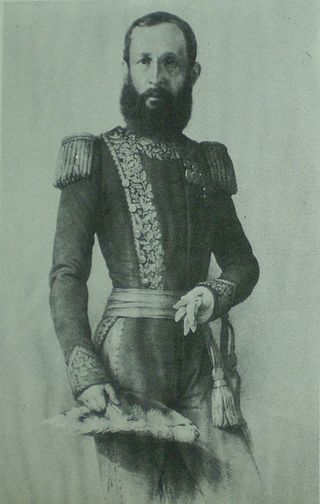 2
Eugenio Garzón fue un militar uruguayo que participó en la guerra de la independencia y en las guerras civiles de la Argentina y el Uruguay.
2
Eugenio Garzón fue un militar uruguayo que participó en la guerra de la independencia y en las guerras civiles de la Argentina y el Uruguay.
Ernesto Diez-Canseco Masías
 2
Ernesto Diez-Canseco Masías, fue un ingeniero, catedrático universitario y político peruano. Fue Senador de la República y Presidente del Senado (1943-1945).
2
Ernesto Diez-Canseco Masías, fue un ingeniero, catedrático universitario y político peruano. Fue Senador de la República y Presidente del Senado (1943-1945).
Pancho Fierro
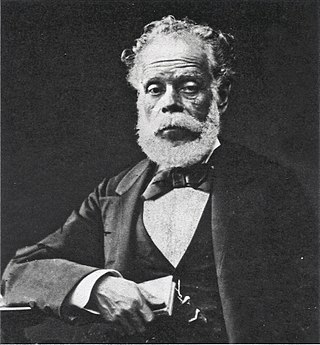 2
Francisco Fierro Palas, called "Pancho" Fierro, was a Peruvian painter, known primarily for his costumbrista watercolors, which depict his country's life and customs.
2
Francisco Fierro Palas, called "Pancho" Fierro, was a Peruvian painter, known primarily for his costumbrista watercolors, which depict his country's life and customs.
Vasco Núñez de Balboa
 2
Vasco Núñez de Balboa was a Spanish explorer, governor, and conquistador. He is best known for crossing the Isthmus of Panama to the Pacific Ocean in 1513, becoming the first European to lead an...
2
Vasco Núñez de Balboa was a Spanish explorer, governor, and conquistador. He is best known for crossing the Isthmus of Panama to the Pacific Ocean in 1513, becoming the first European to lead an...
Narciso de la Colina
 2
Narciso Antonio Joaquín de la Colina y Morales fue un hacendado, empresario, político y precursor peruano de la independencia.
2
Narciso Antonio Joaquín de la Colina y Morales fue un hacendado, empresario, político y precursor peruano de la independencia.
Ladislao Espinar
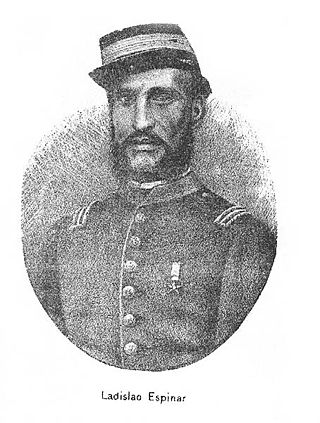 2
Ladislao Espinar Carrera. Militar peruano con el grado de teniente coronel, héroe de la Guerra del Pacífico.
2
Ladislao Espinar Carrera. Militar peruano con el grado de teniente coronel, héroe de la Guerra del Pacífico.
Francisco Graña Garland
 2
Francisco Graña Garland, fue un empresario y periodista peruano. Su muerte, presumiblemente por orden del partido aprista, trajo graves consecuencias políticas al gobierno de José Luis Bustamante y...
2
Francisco Graña Garland, fue un empresario y periodista peruano. Su muerte, presumiblemente por orden del partido aprista, trajo graves consecuencias políticas al gobierno de José Luis Bustamante y...
Ernesto Montagne Sánchez
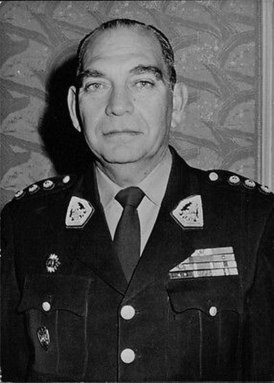 2
Ernesto Montagne Sánchez was a Peruvian politician who served as the Prime Minister of Peru from October 3, 1968, to January 31, 1973. He was born on August 18, 1916, in Lima.
2
Ernesto Montagne Sánchez was a Peruvian politician who served as the Prime Minister of Peru from October 3, 1968, to January 31, 1973. He was born on August 18, 1916, in Lima.
José Domingo Amunátegui
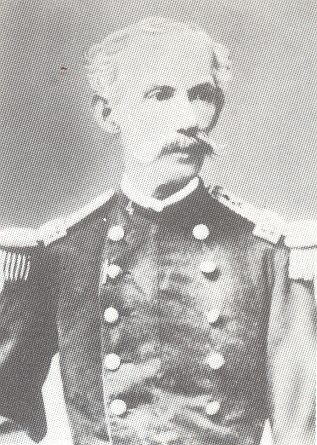 2
José Domingo Amunátegui Borgoño was a Chilean Brigadier General who participated across many battles of the War of the Pacific as well as a primary commander of the Lima campaign.
2
José Domingo Amunátegui Borgoño was a Chilean Brigadier General who participated across many battles of the War of the Pacific as well as a primary commander of the Lima campaign.
Manuel Bonilla
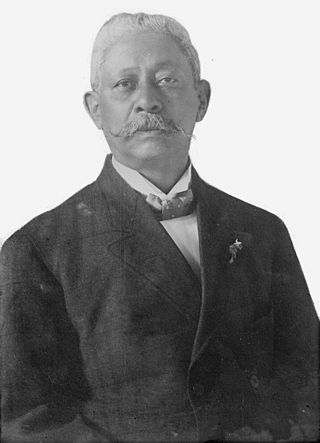 2
General Manuel Bonilla Chirinos was a military officer with the rank of Major General and President of Honduras from 13 April 1903 to 25 February 1907, and again from 1 February 1912 to 21 March...
2
General Manuel Bonilla Chirinos was a military officer with the rank of Major General and President of Honduras from 13 April 1903 to 25 February 1907, and again from 1 February 1912 to 21 March...
Tomás Unger
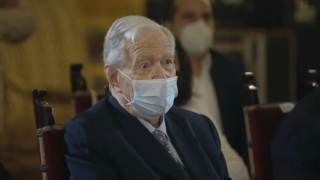 2
Tomás Unger Golsztyn fue un reconocido divulgador científico, periodista y autor peruano-polaco.
2
Tomás Unger Golsztyn fue un reconocido divulgador científico, periodista y autor peruano-polaco.
José Arnaldo Márquez
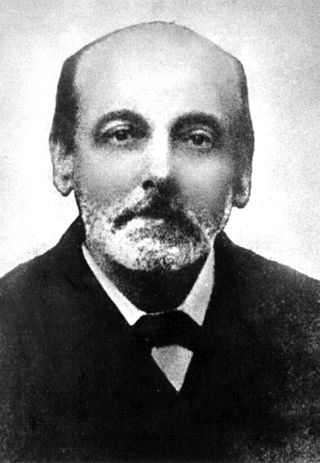 2
José Arnaldo Márquez, fue un poeta, dramaturgo, ensayista, maestro, periodista, traductor, diplomático, militar y viajero peruano. También se le recuerda como inventor de una máquina para componer...
2
José Arnaldo Márquez, fue un poeta, dramaturgo, ensayista, maestro, periodista, traductor, diplomático, militar y viajero peruano. También se le recuerda como inventor de una máquina para componer...
Raúl Ferrero Rebagliati
 2
Raúl Ferrero Rebagliati was a Peruvian politician who served as 105th Prime Minister of Peru for six months in 1967 and 1968. He was Minister of Economy and Finance from January to March 1968. He was...
2
Raúl Ferrero Rebagliati was a Peruvian politician who served as 105th Prime Minister of Peru for six months in 1967 and 1968. He was Minister of Economy and Finance from January to March 1968. He was...
Fernando Belaúnde
 2
Fernando Sergio Marcelo Marcos Belaúnde Terry was a Peruvian politician who twice served as President of Peru. Deposed by a military coup in 1968, he was re-elected in 1980 after twelve years of...
2
Fernando Sergio Marcelo Marcos Belaúnde Terry was a Peruvian politician who twice served as President of Peru. Deposed by a military coup in 1968, he was re-elected in 1980 after twelve years of...
Bernardo de Monteagudo
 2
Bernardo de Monteagudo (1789–1825) was a political activist and revolutionary. He took part in the liberation struggles in South America, particularly in Argentina.
2
Bernardo de Monteagudo (1789–1825) was a political activist and revolutionary. He took part in the liberation struggles in South America, particularly in Argentina.
Pablo Carriquiry Maurer
 2
Pablo Carriquiry Maurer fue un abogado y empresario peruano.
2
Pablo Carriquiry Maurer fue un abogado y empresario peruano.
Esteban Salmón de Luna
 2
Esteban Salmón de Luna fue un militar y político peruano. Es considerado un prócer de la independencia del Perú y fue uno de los firmantes del Acta de Independencia del Perú.
2
Esteban Salmón de Luna fue un militar y político peruano. Es considerado un prócer de la independencia del Perú y fue uno de los firmantes del Acta de Independencia del Perú.
Javier Pérez de Cuéllar
 2
Javier Felipe Ricardo Pérez de Cuéllar de la Guerra was a Peruvian diplomat and politician who served as the fifth Secretary-General of the United Nations from 1982 to 1991. He later served as Prime...
2
Javier Felipe Ricardo Pérez de Cuéllar de la Guerra was a Peruvian diplomat and politician who served as the fifth Secretary-General of the United Nations from 1982 to 1991. He later served as Prime...
Pope John Paul II
 2
Pope John Paul II was head of the Catholic Church and sovereign of the Vatican City State from 1978 until his death in 2005.
2
Pope John Paul II was head of the Catholic Church and sovereign of the Vatican City State from 1978 until his death in 2005.
Juan Gualberto Valdivia
 2
Juan Gualberto Valdivia Cornejo, mencionado también como el Deán Valdivia, fue un eclesiástico, abogado, historiador, periodista y político peruano. Personificó la pasión regionalista de los...
2
Juan Gualberto Valdivia Cornejo, mencionado también como el Deán Valdivia, fue un eclesiástico, abogado, historiador, periodista y político peruano. Personificó la pasión regionalista de los...
Rancho San Ramon (Amador)
 2
Rancho San Ramon was a 20,968-acre (84.85 km2) Mexican land grant in the southern San Ramon Valley of present-day Contra Costa County, California. Rancho San Ramon (Pacheco-Castro) was adjacent in...
2
Rancho San Ramon was a 20,968-acre (84.85 km2) Mexican land grant in the southern San Ramon Valley of present-day Contra Costa County, California. Rancho San Ramon (Pacheco-Castro) was adjacent in...
Justo Arias y Aragüez
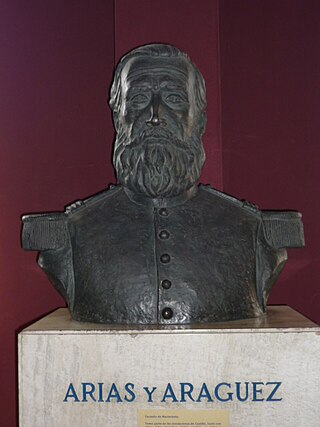 2
José Justo Arias y Aragüez fue un militar peruano. Durante la Guerra del Pacífico fue el primer jefe del batallón "Granaderos de Tacna", y murió combatiendo bravamente en la batalla de Arica.
2
José Justo Arias y Aragüez fue un militar peruano. Durante la Guerra del Pacífico fue el primer jefe del batallón "Granaderos de Tacna", y murió combatiendo bravamente en la batalla de Arica.
Diego Ferré
 2
Diego Ferré Sosa fue un marino peruano. Héroe de la Guerra del Pacífico, falleció en el combate naval de Angamos el 8 de octubre de 1879, al lado de Miguel Grau.
2
Diego Ferré Sosa fue un marino peruano. Héroe de la Guerra del Pacífico, falleció en el combate naval de Angamos el 8 de octubre de 1879, al lado de Miguel Grau.
Carlos de los Heros
 2
Carlos de los Heros Aguilar (1850-1878) was a Peruvian sailor and war hero of the War of the Pacific. He was known for his death during the Second Battle of Antofagasta and was the only Peruvian...
2
Carlos de los Heros Aguilar (1850-1878) was a Peruvian sailor and war hero of the War of the Pacific. He was known for his death during the Second Battle of Antofagasta and was the only Peruvian...
Alfredo Palacios
 2
Alfredo Lorenzo Palacios was an Argentine socialist politician.
2
Alfredo Lorenzo Palacios was an Argentine socialist politician.
Brigida Silva de Ochoa
 2
Brigida Silva de Ochoa was born in Peru in 1776. She came from a family of insurgents in Peruvian war of independence. Her older brother, Coronal Remigio Silva, was arrested during the conspiracy of...
2
Brigida Silva de Ochoa was born in Peru in 1776. She came from a family of insurgents in Peruvian war of independence. Her older brother, Coronal Remigio Silva, was arrested during the conspiracy of...
Pedro Beltrán Espantoso
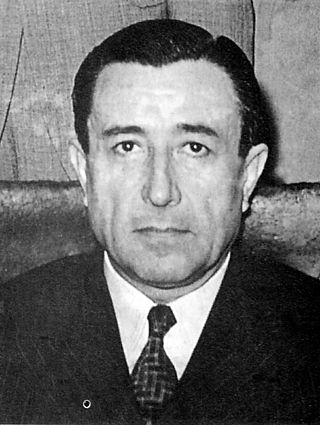 2
Pedro Gerardo María Beltrán Espantoso, was a Peruvian journalist, economist and politician. From 1959 to 1961, he was the Prime Minister and Minister of Finance under Manuel Prado Ugarteche.
2
Pedro Gerardo María Beltrán Espantoso, was a Peruvian journalist, economist and politician. From 1959 to 1961, he was the Prime Minister and Minister of Finance under Manuel Prado Ugarteche.
Horacio Urteaga
 2
Horacio Homero Urteaga López quien firmaba como Horacio H. Urteaga fue un historiador, escritor, político y catedrático universitario peruano. Como historiador centró sus estudios en los períodos...
2
Horacio Homero Urteaga López quien firmaba como Horacio H. Urteaga fue un historiador, escritor, político y catedrático universitario peruano. Como historiador centró sus estudios en los períodos...
José María Córdova
 2
José María Córdova Muñoz, also known as the "Hero of Ayacucho", was a General of the Colombian army during the Independence War of Colombia, Perú, and Bolivia from Spain.
2
José María Córdova Muñoz, also known as the "Hero of Ayacucho", was a General of the Colombian army during the Independence War of Colombia, Perú, and Bolivia from Spain.
Afrânio de Melo Franco
 2
Afrânio de Mello Franco GCC foi um diplomata e político brasileiro.
2
Afrânio de Mello Franco GCC foi um diplomata e político brasileiro.
Cayetano Heredia
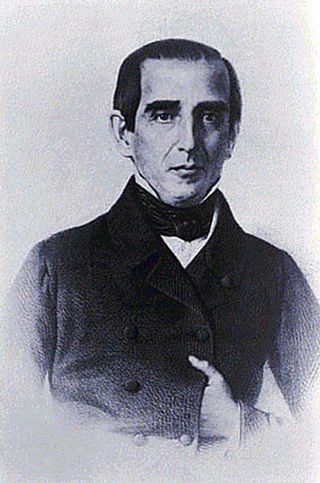 2
Cayetano Heredia was a Peruvian physician, born in Catacaos, Piura, northwestern Peru. He studied medicine at the Royal College of Medicine and Surgery of the National University of San Marcos....
2
Cayetano Heredia was a Peruvian physician, born in Catacaos, Piura, northwestern Peru. He studied medicine at the Royal College of Medicine and Surgery of the National University of San Marcos....
Hermilio Valdizán
 2
Hermilio Valdizán was a Peruvian physician who specialized in psychiatry.
2
Hermilio Valdizán was a Peruvian physician who specialized in psychiatry.
Manuel Sebastián Ugarte y Moscoso
 2
Manuel Sebastián Ugarte y Moscoso fue un militar peruano. Es reconocido como héroe nacional de la Medicina Naval del Perú, así como del Cuerpo General de Bomberos Voluntarios del Perú, perteneciente...
2
Manuel Sebastián Ugarte y Moscoso fue un militar peruano. Es reconocido como héroe nacional de la Medicina Naval del Perú, así como del Cuerpo General de Bomberos Voluntarios del Perú, perteneciente...
Miguel Antonio Checa Eguiguren
 2
Miguel Antonio Checa Eguiguren fue un hacendado, abogado y político peruano.
2
Miguel Antonio Checa Eguiguren fue un hacendado, abogado y político peruano.
Isabella I of Castile
 2
Isabella I, also called Isabella the Catholic, was Queen of Castile and León from 1474 until her death in 1504. She was also Queen of Aragon from 1479 until her death as the wife of King Ferdinand...
2
Isabella I, also called Isabella the Catholic, was Queen of Castile and León from 1474 until her death in 1504. She was also Queen of Aragon from 1479 until her death as the wife of King Ferdinand...
Frederic Remington
 2
Frederic Sackrider Remington was an American painter, illustrator, sculptor, and writer who specialized in the genre of Western American Art. His works are known for depicting the Western United...
2
Frederic Sackrider Remington was an American painter, illustrator, sculptor, and writer who specialized in the genre of Western American Art. His works are known for depicting the Western United...
Francisco García Calderón
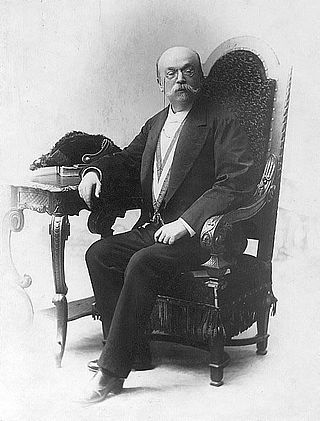 2
Francisco García Calderón Landa was a lawyer and Provisional President of the Republic of Peru for a short seven-month period in 1881, during the War of the Pacific. García Calderón was a key figure...
2
Francisco García Calderón Landa was a lawyer and Provisional President of the Republic of Peru for a short seven-month period in 1881, during the War of the Pacific. García Calderón was a key figure...
José Joaquín Inclán
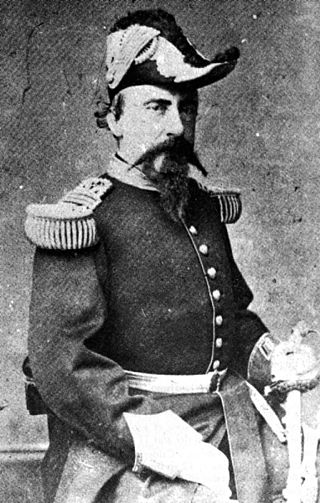 2
José Joaquín Inclán González-Vigil, fue un militar peruano, héroe de la batalla de Arica.
2
José Joaquín Inclán González-Vigil, fue un militar peruano, héroe de la batalla de Arica.
José Gálvez Barrenechea
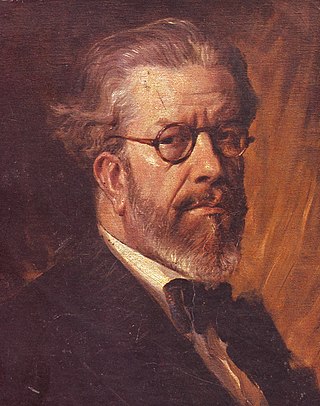 2
José Gálvez Barrenechea was a Peruvian poet, writer, journalist, university professor, and politician. He was Minister of Justice, Worship and Instruction (1931); Minister of Foreign Relations...
2
José Gálvez Barrenechea was a Peruvian poet, writer, journalist, university professor, and politician. He was Minister of Justice, Worship and Instruction (1931); Minister of Foreign Relations...
Chachapoya culture
 2
The Chachapoyas, also called the "Warriors of the Clouds", was a culture of the Andes living in the cloud forests of the southern part of the Department of Amazonas of present-day Peru. The Inca...
2
The Chachapoyas, also called the "Warriors of the Clouds", was a culture of the Andes living in the cloud forests of the southern part of the Department of Amazonas of present-day Peru. The Inca...
Federico Barreto
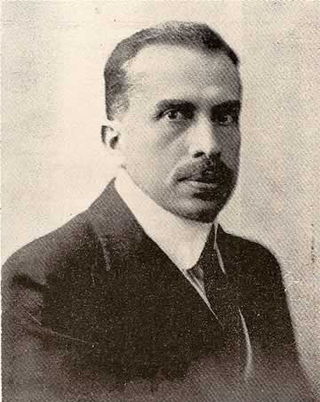 2
Federico Barreto was a Peruvian poet and writer best known for his poetry collection El cantor del cautiverio.
2
Federico Barreto was a Peruvian poet and writer best known for his poetry collection El cantor del cautiverio.
Alonso de Molina
 2
Alonso de Molina was a Franciscan priest and grammarian, who wrote a well-known dictionary of the Nahuatl language published in 1571 and still used by scholars working on Nahuatl texts in the...
2
Alonso de Molina was a Franciscan priest and grammarian, who wrote a well-known dictionary of the Nahuatl language published in 1571 and still used by scholars working on Nahuatl texts in the...
Andrés Martínez Trueba
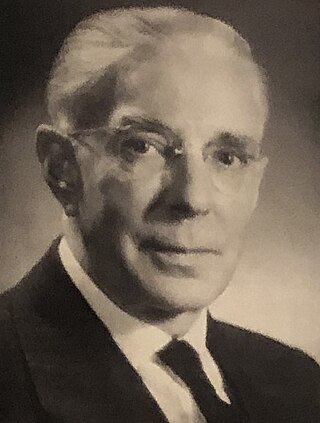 2
Andrés Martínez Trueba was the President of Uruguay from 1951 to 1955.
2
Andrés Martínez Trueba was the President of Uruguay from 1951 to 1955.
Pablo Patrón
 2
Pablo Patrón Faustos fue un médico peruano, apasionado por la arqueología y los estudios lingüísticos, bibliográficos, históricos y geográficos. Escribió varios libros y monografías en las que...
2
Pablo Patrón Faustos fue un médico peruano, apasionado por la arqueología y los estudios lingüísticos, bibliográficos, históricos y geográficos. Escribió varios libros y monografías en las que...
Francisco Masías
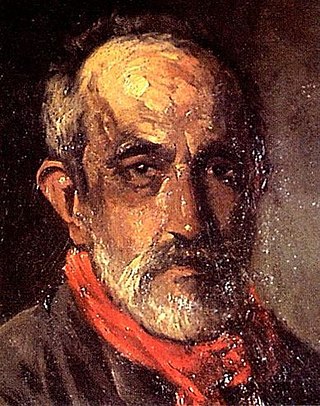 2
Juan Francisco Luis Masías Rodríguez, más conocido como Francisco Masías fue un pintor peruano. Artista bohemio, es uno de los representantes del neoacademicismo peruano. Autor de cuadros religiosos,...
2
Juan Francisco Luis Masías Rodríguez, más conocido como Francisco Masías fue un pintor peruano. Artista bohemio, es uno de los representantes del neoacademicismo peruano. Autor de cuadros religiosos,...
Bartolomé Herrera
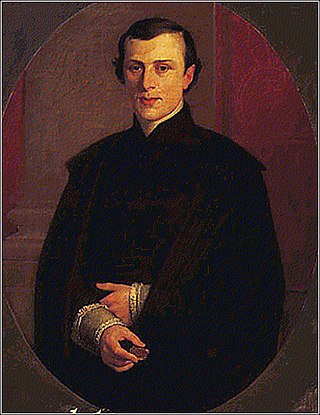 2
Bartolomé Herrera Vélez fue un sacerdote, filósofo y político peruano. Pensador de tendencia ultramontana y antiliberal, es el máximo representante del conservadurismo peruano del siglo XIX. Fue...
2
Bartolomé Herrera Vélez fue un sacerdote, filósofo y político peruano. Pensador de tendencia ultramontana y antiliberal, es el máximo representante del conservadurismo peruano del siglo XIX. Fue...
Carlos Fitzcarrald
 2
Carlos Fermín Fitzcarrald López was a Peruvian rubber baron. He was born in San Luis, Ancash, in a province that was later named after him. In the early 1890s, Fitzcarrald discovered the Isthmus of...
2
Carlos Fermín Fitzcarrald López was a Peruvian rubber baron. He was born in San Luis, Ancash, in a province that was later named after him. In the early 1890s, Fitzcarrald discovered the Isthmus of...
Philipp Lenard
 2
Philipp Eduard Anton von Lenard was a Hungarian-born German physicist and the winner of the Nobel Prize for Physics in 1905 for his work on cathode rays and the discovery of many of their properties....
2
Philipp Eduard Anton von Lenard was a Hungarian-born German physicist and the winner of the Nobel Prize for Physics in 1905 for his work on cathode rays and the discovery of many of their properties....
Ramiro Prialé
 2
Ramiro Abelardo Prialé Prialé was a Peruvian politician. A member of the American Popular Revolutionary Alliance, he was a friend of Víctor Raúl Haya De La Torre. He served as the President of the...
2
Ramiro Abelardo Prialé Prialé was a Peruvian politician. A member of the American Popular Revolutionary Alliance, he was a friend of Víctor Raúl Haya De La Torre. He served as the President of the...
Pedro de Osma y Pardo
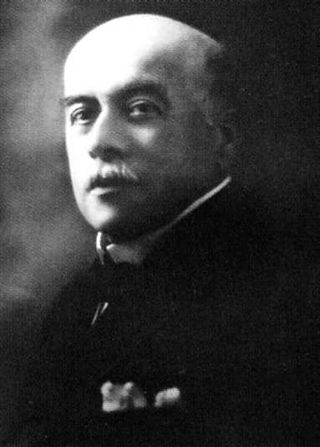 2
Pedro de Osma y Pardo fue un abogado y político peruano. Dirigente del Partido Demócrata o pierolista, fundó el diario La Prensa en 1903, para que fuera el vocero oficial de su partido. Fue además...
2
Pedro de Osma y Pardo fue un abogado y político peruano. Dirigente del Partido Demócrata o pierolista, fundó el diario La Prensa en 1903, para que fuera el vocero oficial de su partido. Fue además...
Miguel Iglesias
 2
Miguel Iglesias Pino de Arce was born on 11 June 1830 in Cajamarca, Peru, and died on 7 November 1909 in Lima, Peru. He was a Peruvian soldier, general, and politician who served as the 26th...
2
Miguel Iglesias Pino de Arce was born on 11 June 1830 in Cajamarca, Peru, and died on 7 November 1909 in Lima, Peru. He was a Peruvian soldier, general, and politician who served as the 26th...
Carlos Tenaud
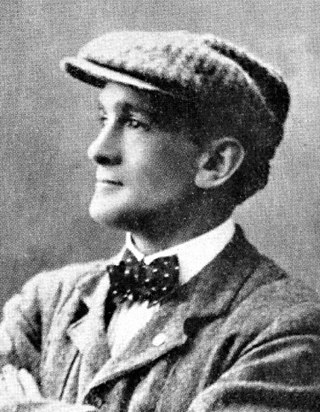 2
Carlos Tenaud Pomar fue un aviador peruano. Fue uno de los pioneros de la aviación mundial y héroe de la aviación civil.
2
Carlos Tenaud Pomar fue un aviador peruano. Fue uno de los pioneros de la aviación mundial y héroe de la aviación civil.
Augusto B. Leguía
 2
Augusto Bernardino Leguía y Salcedo was a Peruvian politician who served as President of Peru from 1908 to 1912 and from 1919 to 1930, the latter term known as El Oncenio de Leguía.
2
Augusto Bernardino Leguía y Salcedo was a Peruvian politician who served as President of Peru from 1908 to 1912 and from 1919 to 1930, the latter term known as El Oncenio de Leguía.
José María Arguedas
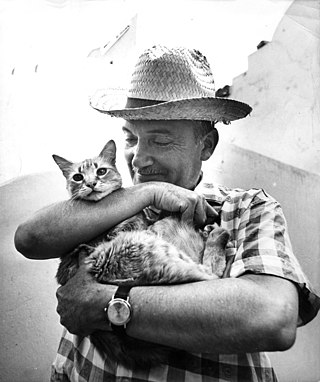 2
José María Arguedas Altamirano was a Peruvian novelist, poet, and anthropologist. Arguedas was an author of mestizo descent who was fluent in the Quechua language. That fluency was gained by...
2
José María Arguedas Altamirano was a Peruvian novelist, poet, and anthropologist. Arguedas was an author of mestizo descent who was fluent in the Quechua language. That fluency was gained by...
Jorge C. Muelle
 2
Jorge C. Muelle fue un arqueólogo, antropólogo y docente peruano. Discípulo de Max Uhle, Wendell Bennett y Alfred L. Kroeber, publicó importantes trabajos sobre las investigaciones que realizó a lo...
2
Jorge C. Muelle fue un arqueólogo, antropólogo y docente peruano. Discípulo de Max Uhle, Wendell Bennett y Alfred L. Kroeber, publicó importantes trabajos sobre las investigaciones que realizó a lo...
Daniel Olaechea
 2
Daniel Agustín Olaechea y Olaechea fue un abogado, diplomático y político peruano. Fue Ministro de Justicia, Instrucción, Culto y Beneficencia en 1933.
2
Daniel Agustín Olaechea y Olaechea fue un abogado, diplomático y político peruano. Fue Ministro de Justicia, Instrucción, Culto y Beneficencia en 1933.
José Balta
 2
José Balta y Montero was a Peruvian soldier and politician who served as the 19th President of Peru from 1868 to 1872. He was the son of John Balta Bru and Agustina Montero Casafranca.
2
José Balta y Montero was a Peruvian soldier and politician who served as the 19th President of Peru from 1868 to 1872. He was the son of John Balta Bru and Agustina Montero Casafranca.
Inca Roca
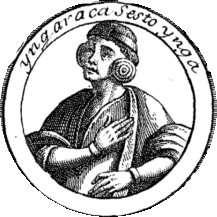 2
Inca Roca was the sixth Sapa Inca of the Kingdom of Cusco and the first of the Hanan ("upper") Qusqu dynasty. His wife was Mama Michay, and his son was Yawar Waqaq.
2
Inca Roca was the sixth Sapa Inca of the Kingdom of Cusco and the first of the Hanan ("upper") Qusqu dynasty. His wife was Mama Michay, and his son was Yawar Waqaq.
Nicolás de Araníbar
 2
Nicolás de Araníbar Fernández Cornejo fue un abogado, magistrado y político peruano. Fue diputado y presidente del Primer Congreso Constituyente del Perú (1823), senador de la República (1829-1832),...
2
Nicolás de Araníbar Fernández Cornejo fue un abogado, magistrado y político peruano. Fue diputado y presidente del Primer Congreso Constituyente del Perú (1823), senador de la República (1829-1832),...
Esteban Campodónico
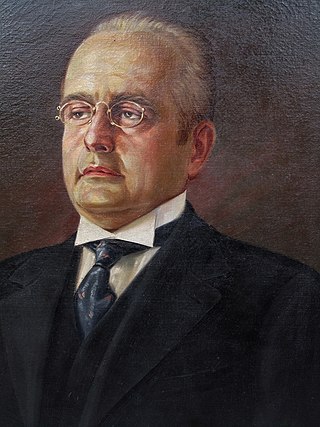 2
Esteban Campodónico Figallo fue un médico, catedrático, humanista y filántropo italoperuano.
2
Esteban Campodónico Figallo fue un médico, catedrático, humanista y filántropo italoperuano.
Domingo Orué y Mirones
 2
Domingo de Orúe y Mirones fue un político peruano.
2
Domingo de Orúe y Mirones fue un político peruano.
Gustavo Jiménez
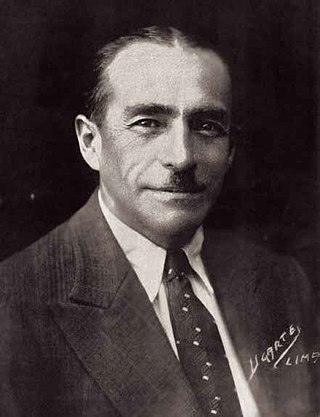 2
Gustavo Jiménez was a Peruvian colonel who served as Interim President of Peru, officially as the President of the Provisional Government Junta, in 1931.
2
Gustavo Jiménez was a Peruvian colonel who served as Interim President of Peru, officially as the President of the Provisional Government Junta, in 1931.
Francisco Laso
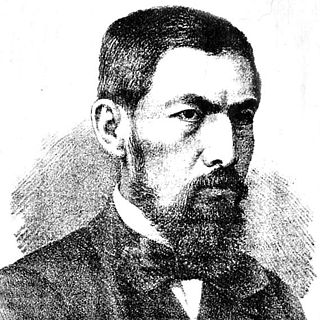 2
José Francisco Domingo Laso de la Vega y de los Ríos was a Peruvian painter and politician. During his lifetime he was mostly known for his portraits, but is now better known for creating works that...
2
José Francisco Domingo Laso de la Vega y de los Ríos was a Peruvian painter and politician. During his lifetime he was mostly known for his portraits, but is now better known for creating works that...
Enrique Martinelli Tizón
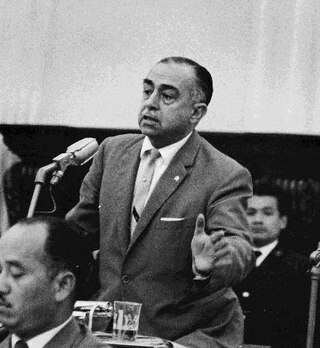 2
Enrique Ignacio Martinelli Tizón fue un ingeniero y político peruano. Diputado y senador por Apurímac, presidió el Senado del Perú en dos ocasiones y el Jockey Club del Perú en cuatro oportunidades.
2
Enrique Ignacio Martinelli Tizón fue un ingeniero y político peruano. Diputado y senador por Apurímac, presidió el Senado del Perú en dos ocasiones y el Jockey Club del Perú en cuatro oportunidades.
Samuel del Alcázar
 2
Samuel del Alcázar y Huguet. Militar, Coronel del Ejército del Perú, muerto en Chota en 1924.
2
Samuel del Alcázar y Huguet. Militar, Coronel del Ejército del Perú, muerto en Chota en 1924.
Cristóbal de Peralta
 2
Cristóbal de Peralta, militar español. Participó en la conquista del Perú y fue uno de los Trece de la fama, es decir, uno de los trece soldados españoles que no quisieron abandonar a Francisco...
2
Cristóbal de Peralta, militar español. Participó en la conquista del Perú y fue uno de los Trece de la fama, es decir, uno de los trece soldados españoles que no quisieron abandonar a Francisco...
Rivett Henry Bland
 2
Rivett Henry Bland was an early settler and a government administrator in colonial Australia.
2
Rivett Henry Bland was an early settler and a government administrator in colonial Australia.
Luis Felipe de Las Casas Grieve
 2
Luis Felipe de Las Casas Grieve (1916–1988) was a Peruvian politician and engineer. He was a featured member of APRA, centre-left Peruvian political party. During the government of Juan Velasco...
2
Luis Felipe de Las Casas Grieve (1916–1988) was a Peruvian politician and engineer. He was a featured member of APRA, centre-left Peruvian political party. During the government of Juan Velasco...
Adam Smith
 2
Adam Smith was a Scottish economist and philosopher who was a pioneer in the thinking of political economy and key figure during the Scottish Enlightenment. Seen by some as "The Father of Economics"...
2
Adam Smith was a Scottish economist and philosopher who was a pioneer in the thinking of political economy and key figure during the Scottish Enlightenment. Seen by some as "The Father of Economics"...
Ricardo Bentín Sánchez
 2
Ricardo Bentín Sánchez was a Peruvian politician, soldier and businessman. He participated in the Peruvian resistance during the Pacific War. He became President of the Congress of the Republic...
2
Ricardo Bentín Sánchez was a Peruvian politician, soldier and businessman. He participated in the Peruvian resistance during the Pacific War. He became President of the Congress of the Republic...
Pedro Diez Canseco
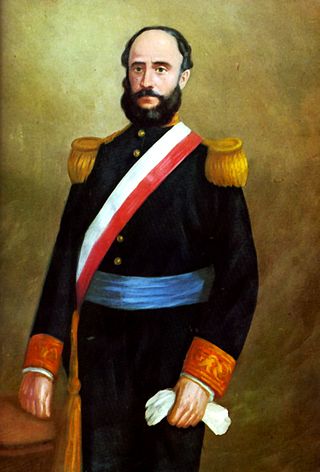 2
Pedro Diez Canseco Corbacho was a Peruvian soldier and politician who served as President of Peru in 1863 and again in 1868; he also served as Interim President of Peru in 1865. He served as the...
2
Pedro Diez Canseco Corbacho was a Peruvian soldier and politician who served as President of Peru in 1863 and again in 1868; he also served as Interim President of Peru in 1865. He served as the...
Juan Tomis Stack
 2
Juan Edmundo Tomis Stack, conocido como Padre Juan Tomis, fue un sacerdote católico destacado por la diócesis de Bridgeport, Connecticut, como misionero en el norte peruano. Se le reconoce como el...
2
Juan Edmundo Tomis Stack, conocido como Padre Juan Tomis, fue un sacerdote católico destacado por la diócesis de Bridgeport, Connecticut, como misionero en el norte peruano. Se le reconoce como el...
Francisco Tudela y Varela
 2
Francisco Tudela y Varela was a French-born Peruvian diplomat, lawyer and politician. He was born in Paris, France. He graduated from the National University of San Marcos and served on its faculty....
2
Francisco Tudela y Varela was a French-born Peruvian diplomat, lawyer and politician. He was born in Paris, France. He graduated from the National University of San Marcos and served on its faculty....
Mariano Ignacio Prado
 2
Mariano Ignacio Prado Ochoa was a Peruvian army general who served as the 17th and 21st President of Peru.
2
Mariano Ignacio Prado Ochoa was a Peruvian army general who served as the 17th and 21st President of Peru.
Enrique Guzmán y Valle
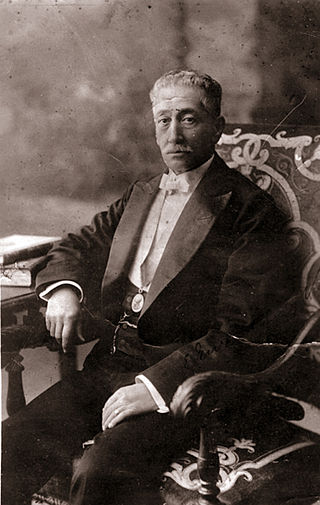 2
Enrique Guzmán y Valle, was a Peruvian chemist and professor.
2
Enrique Guzmán y Valle, was a Peruvian chemist and professor.
Francisco Diez Canseco
 2
Francisco Diez Canseco Corbacho served as Interim President of Peru for a brief period during 1872. He was the brother of General Pedro Diez Canseco.
2
Francisco Diez Canseco Corbacho served as Interim President of Peru for a brief period during 1872. He was the brother of General Pedro Diez Canseco.
Pedro Gálvez Egúsquiza
 2
Pedro Gálvez Egúsquiza was a Peruvian lawyer, politician, educator and diplomat. A staunch liberal, he was one of the leaders of the Liberal Revolution of 1854 headed by General Ramón Castilla. He is...
2
Pedro Gálvez Egúsquiza was a Peruvian lawyer, politician, educator and diplomat. A staunch liberal, he was one of the leaders of the Liberal Revolution of 1854 headed by General Ramón Castilla. He is...
José Baquíjano y Carrillo
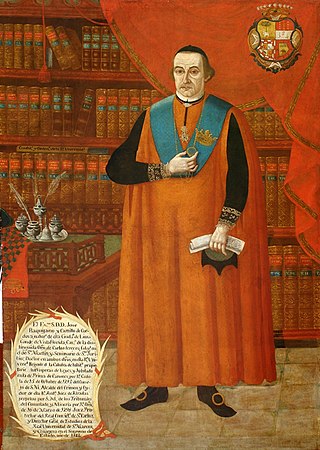 2
José Javier Leandro de Baquíjano y Carrillo de Córdoba, III conde de Vistaflorida fue un economista, jurista, escritor y político hispanoperuano, y uno de los primeros grandes intelectuales del...
2
José Javier Leandro de Baquíjano y Carrillo de Córdoba, III conde de Vistaflorida fue un economista, jurista, escritor y político hispanoperuano, y uno de los primeros grandes intelectuales del...